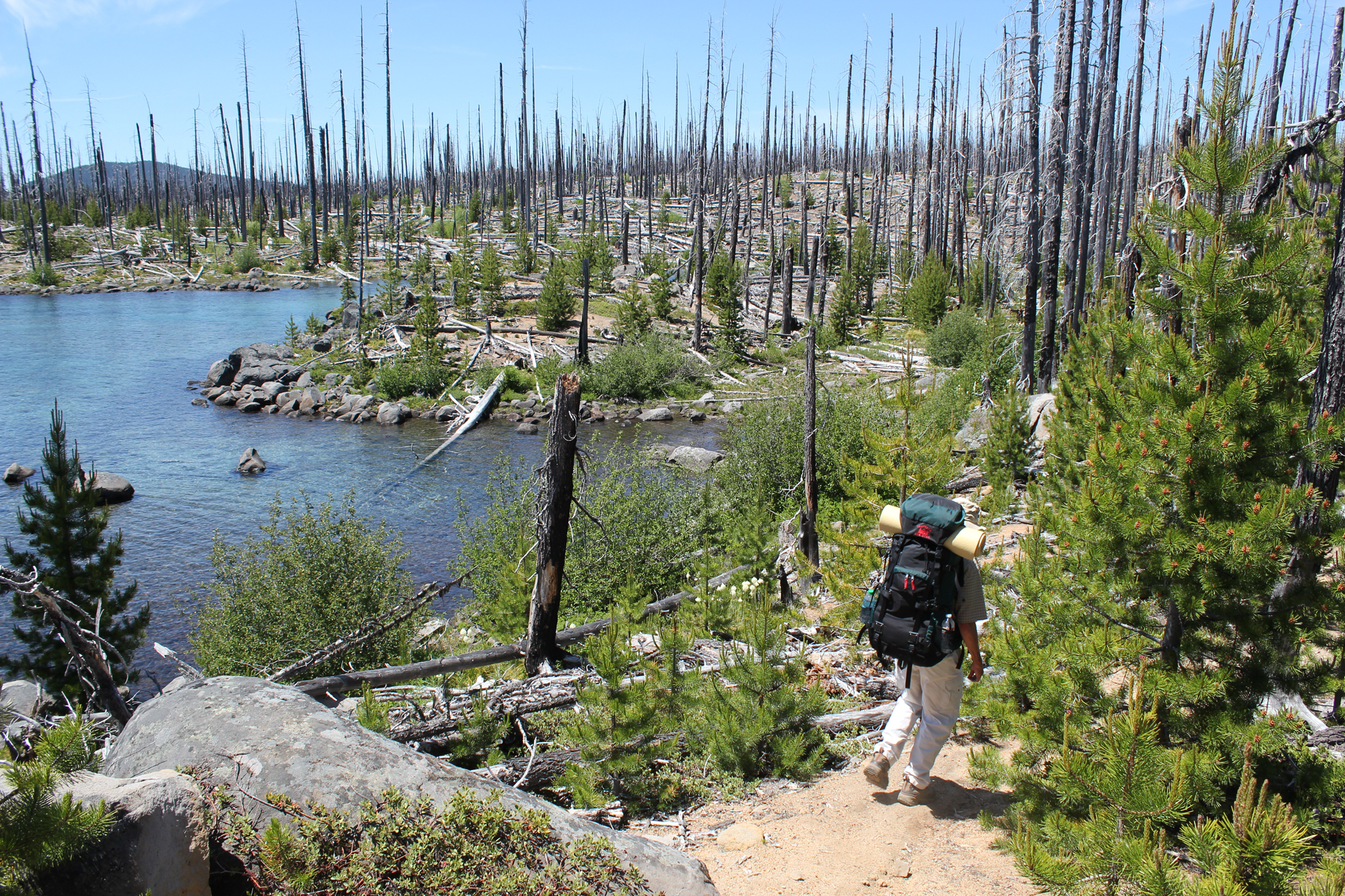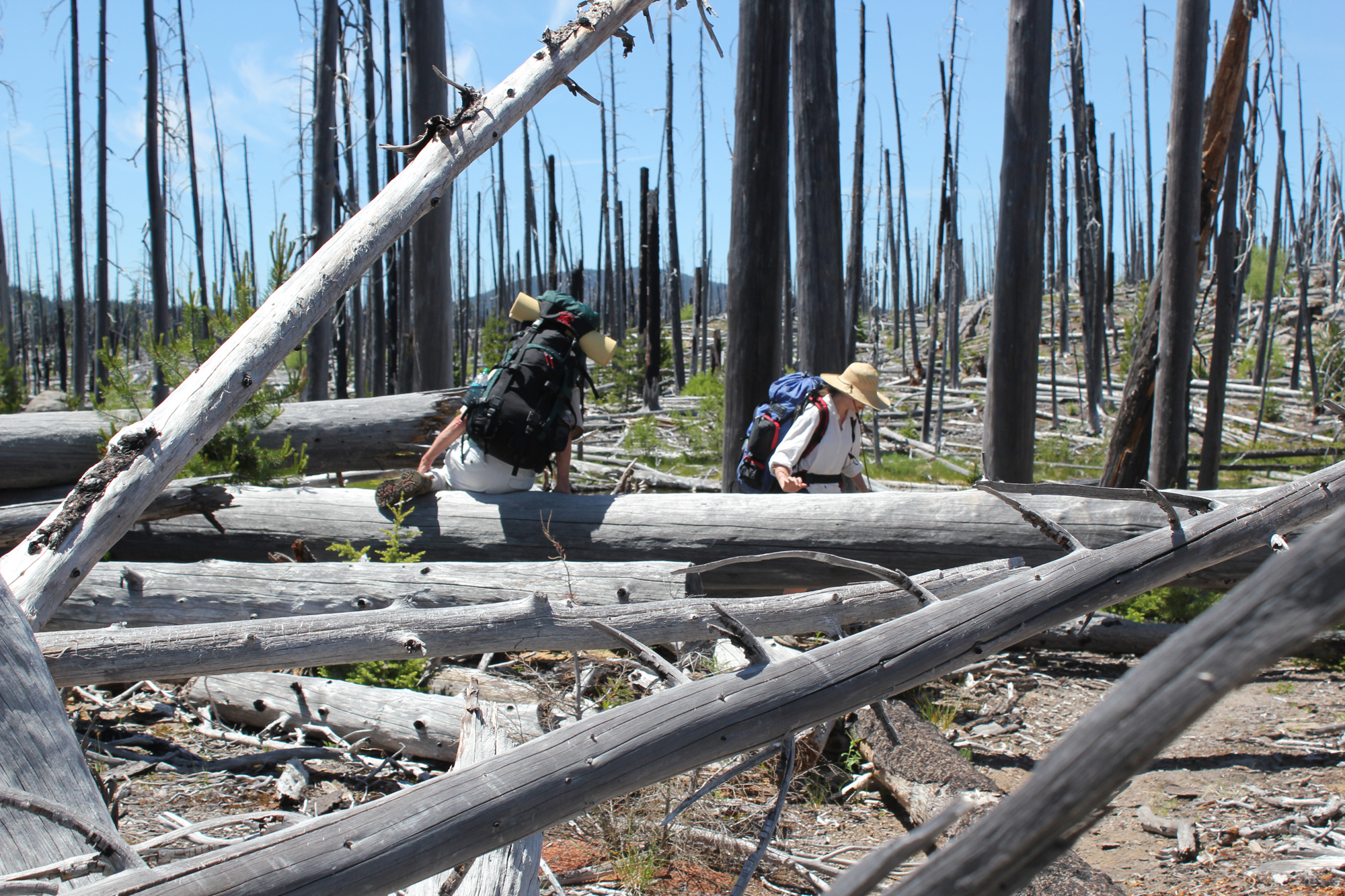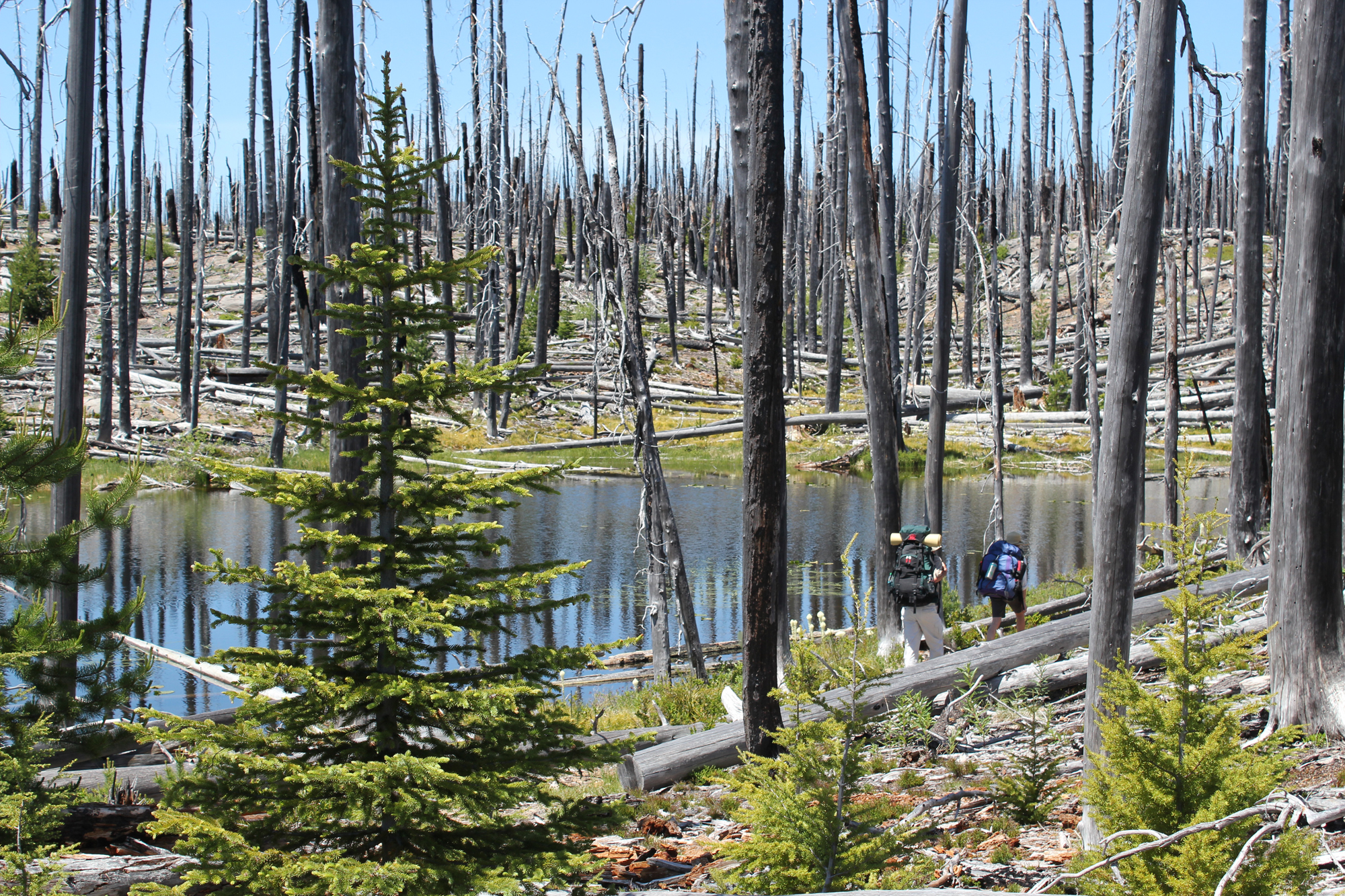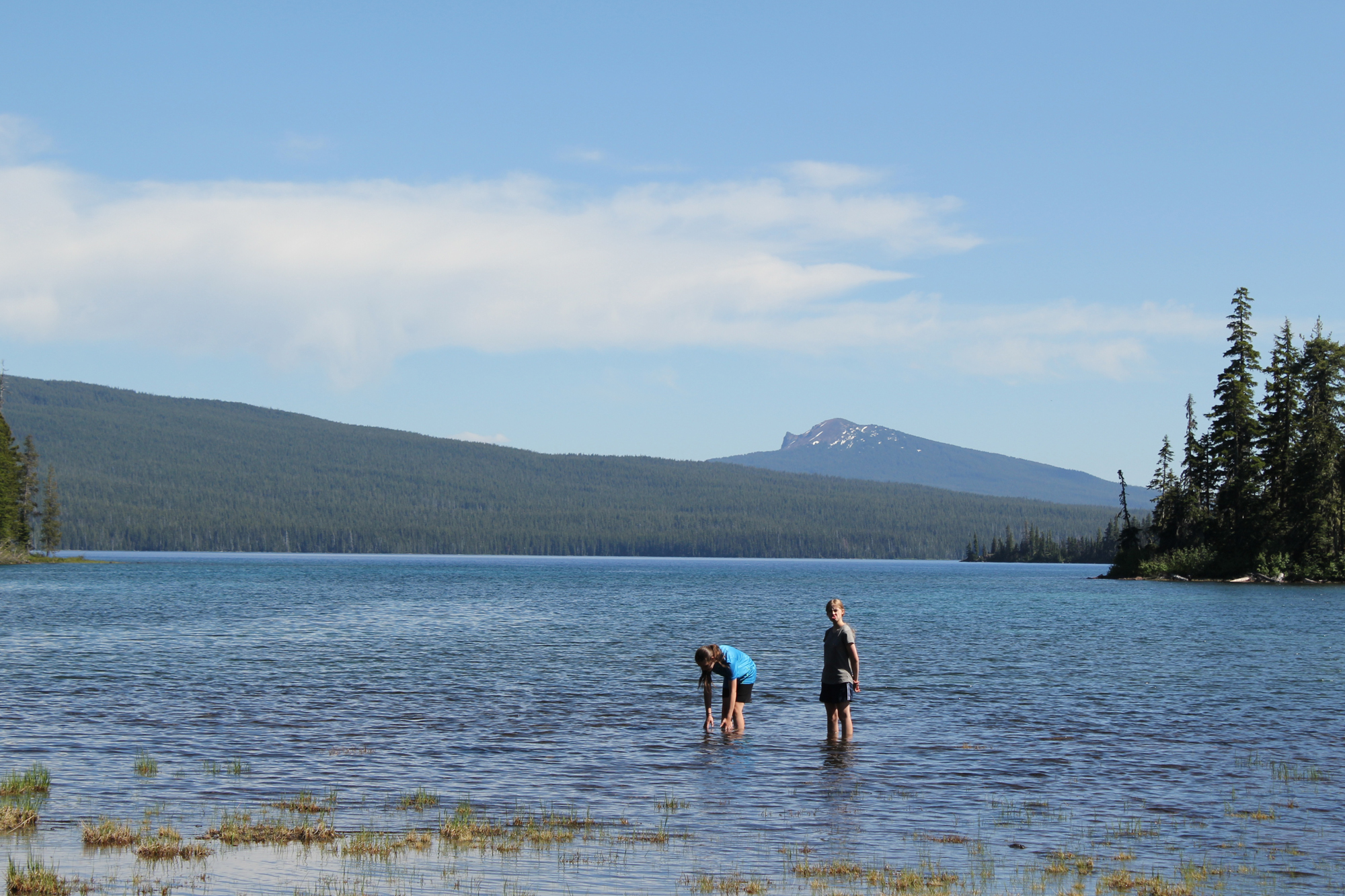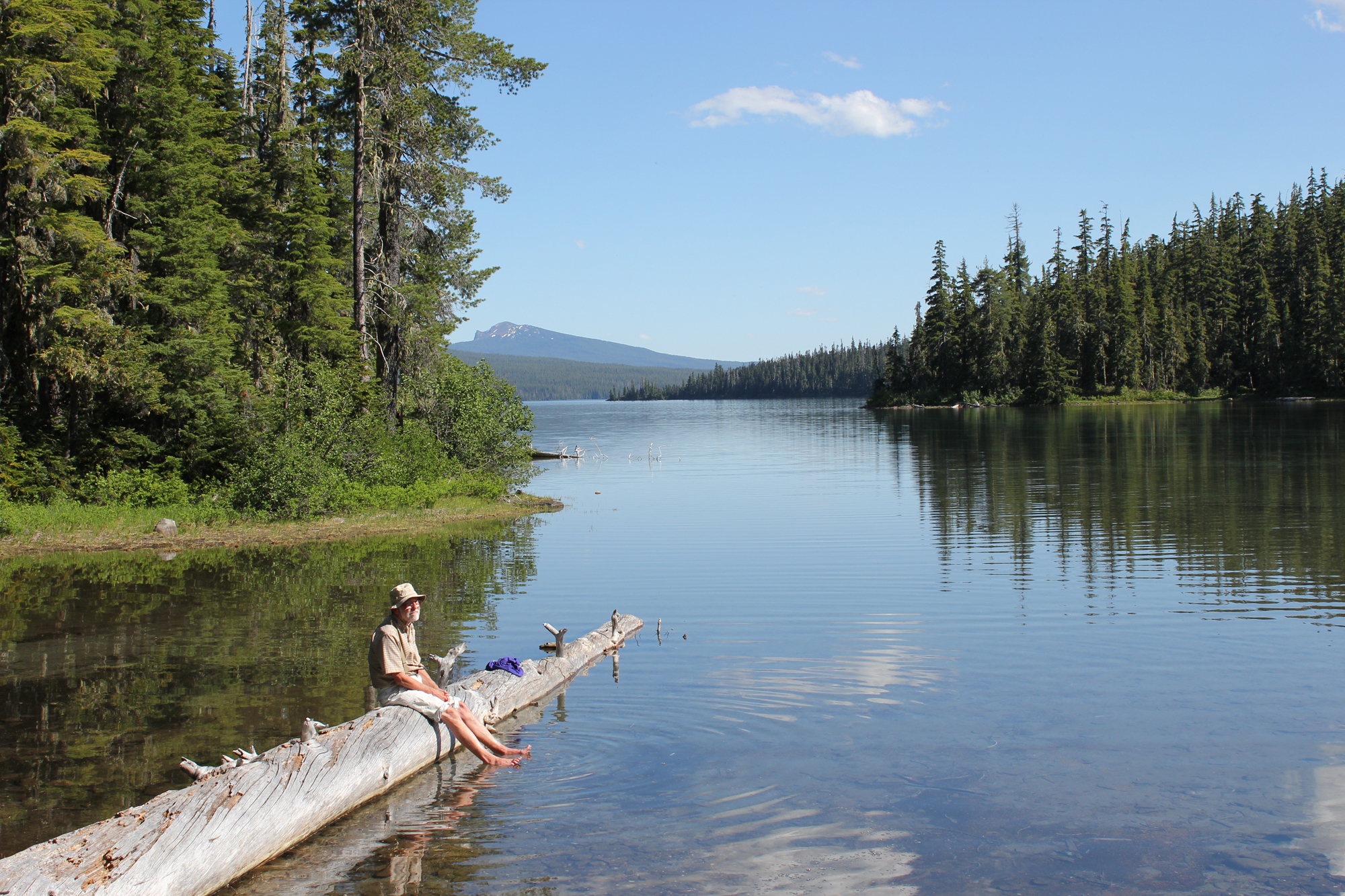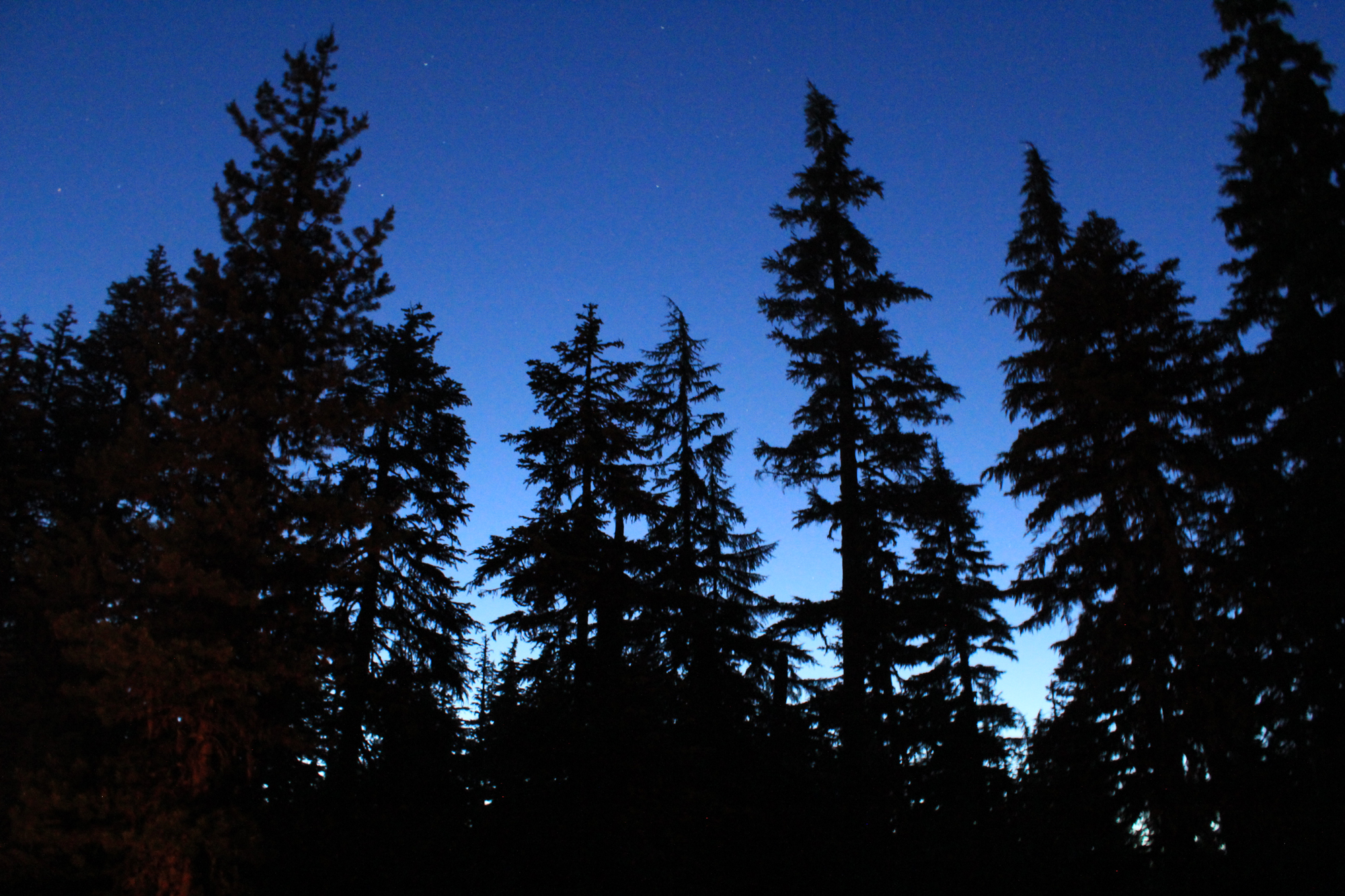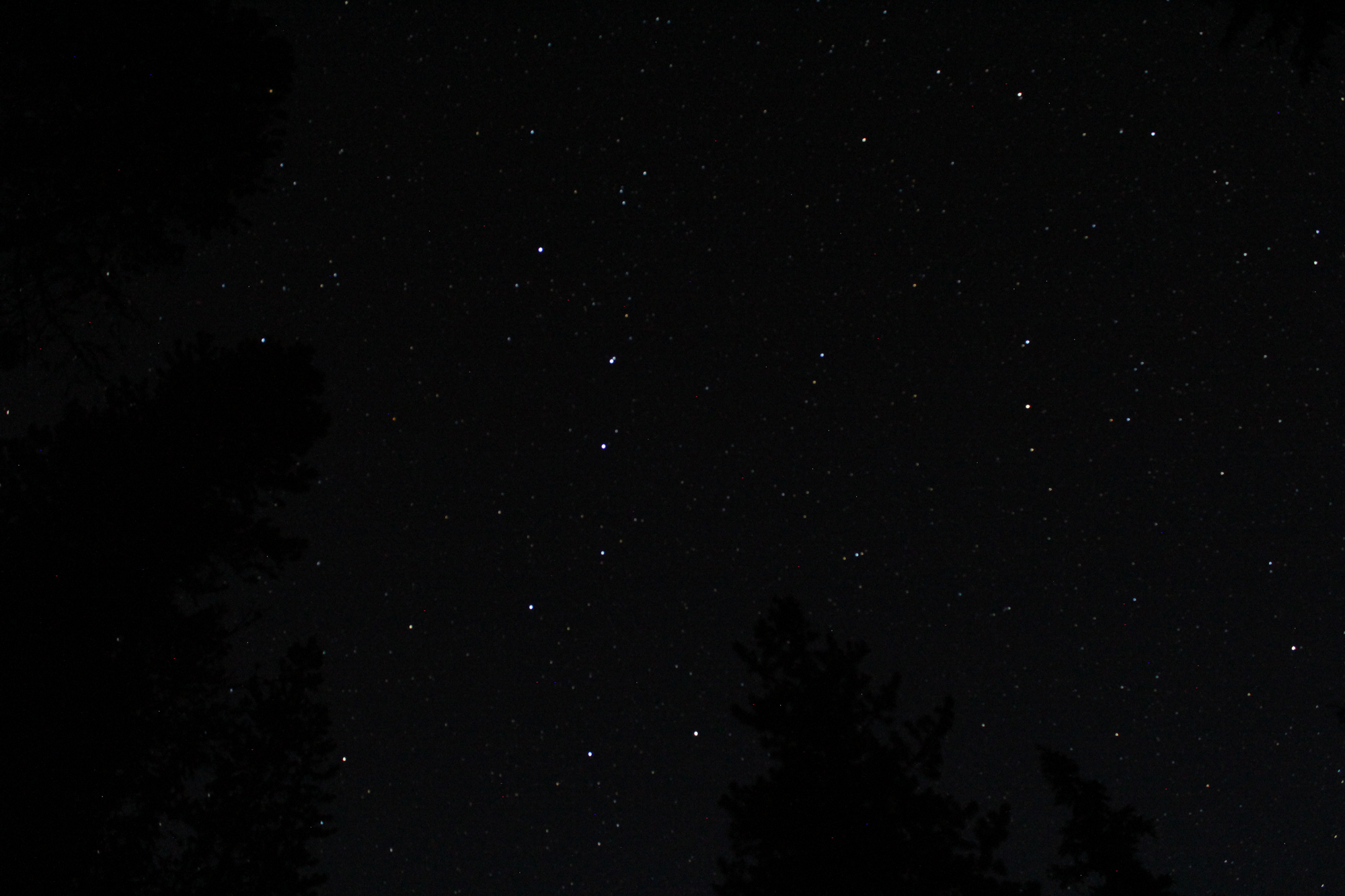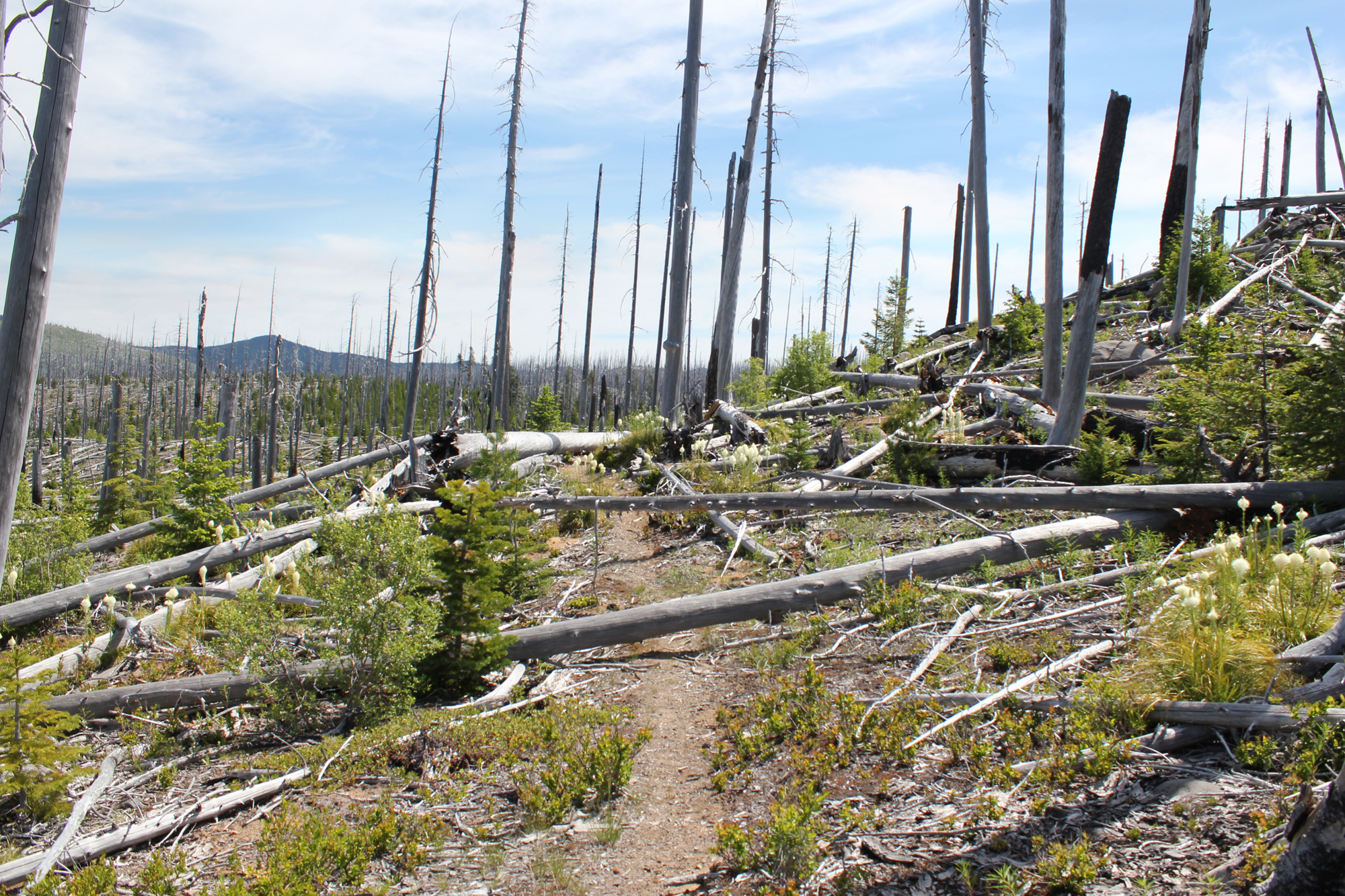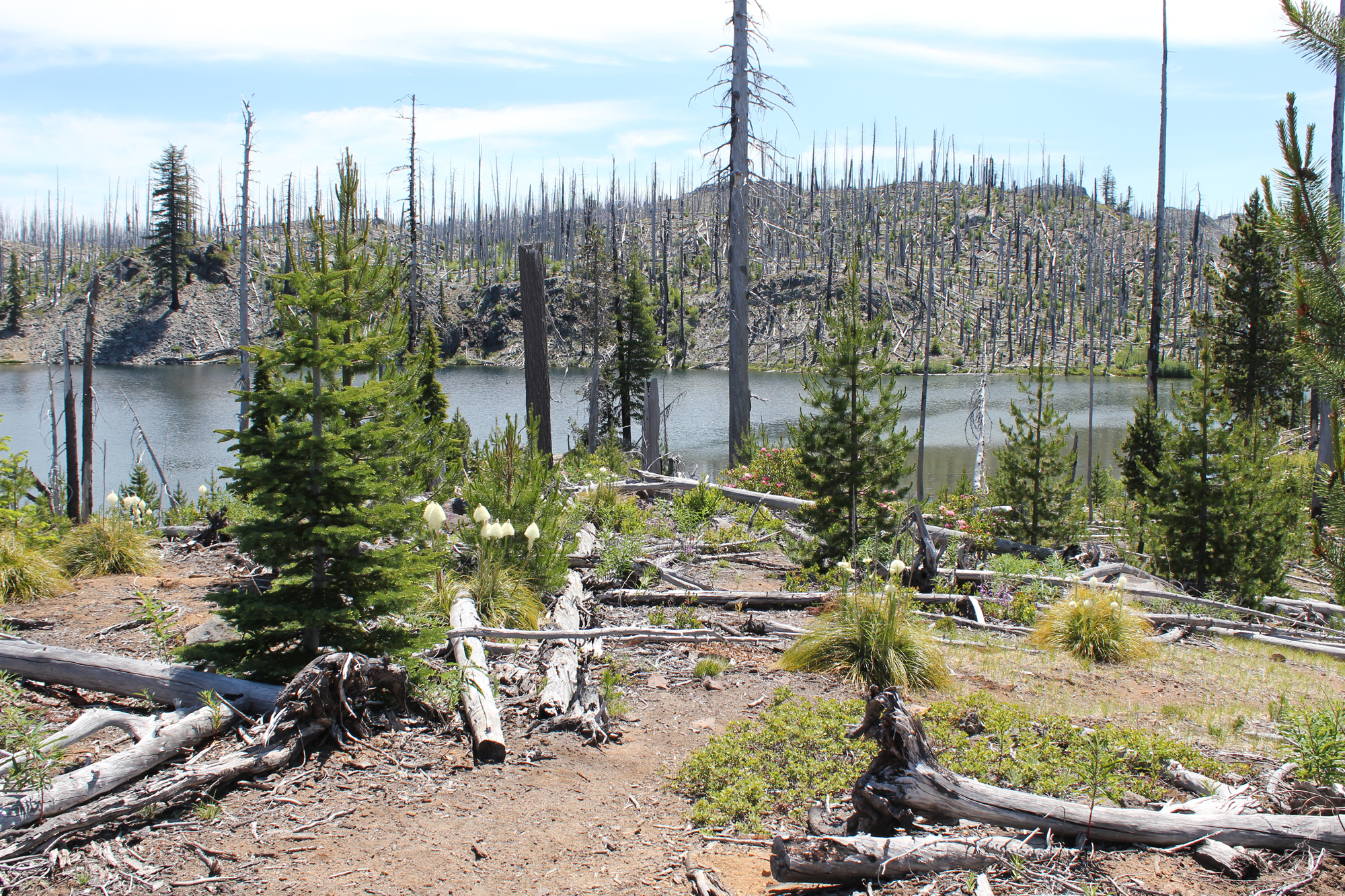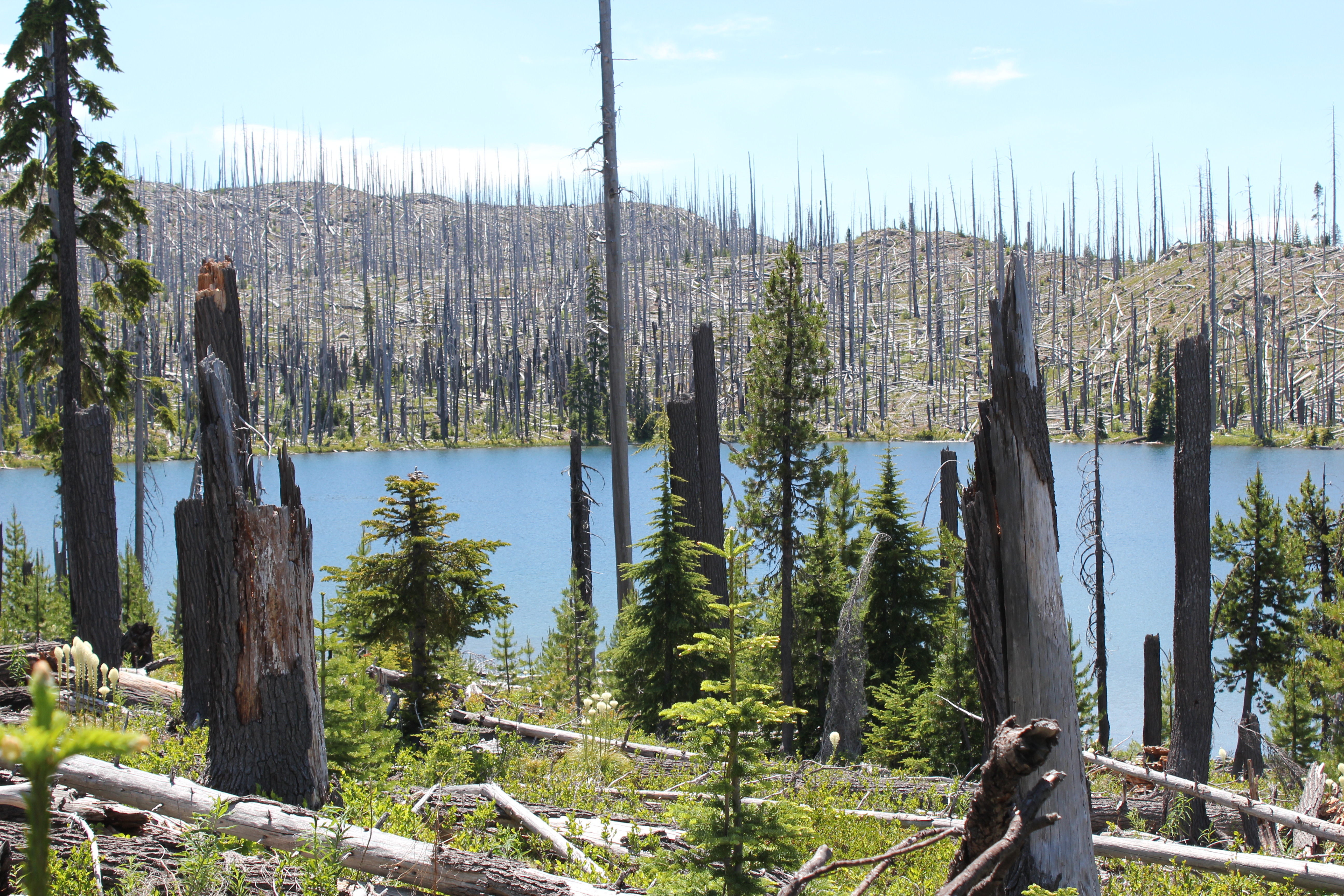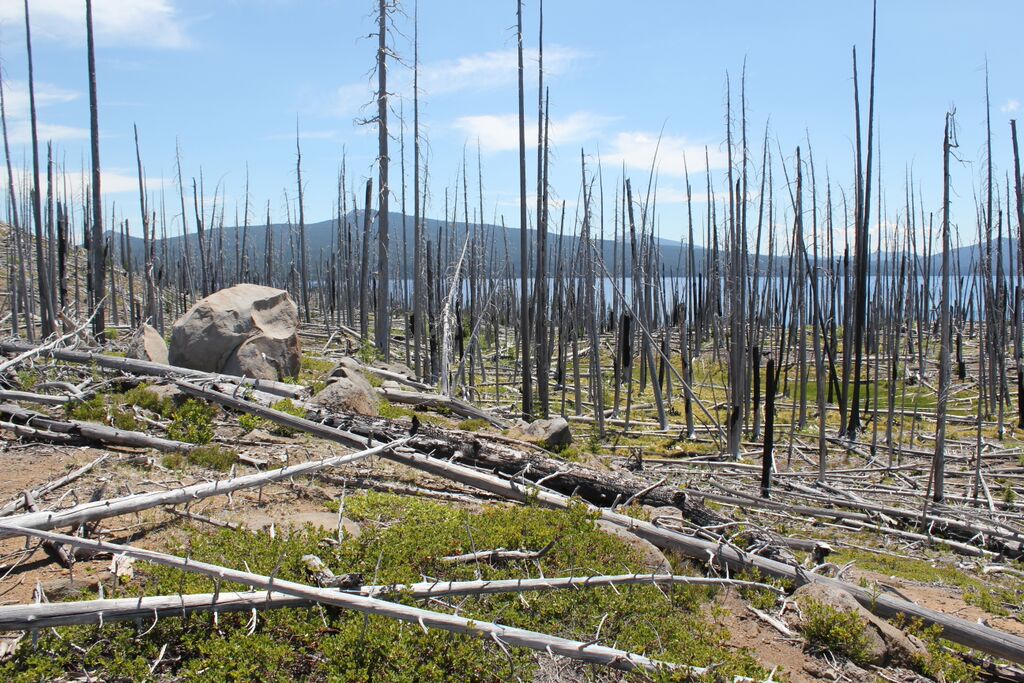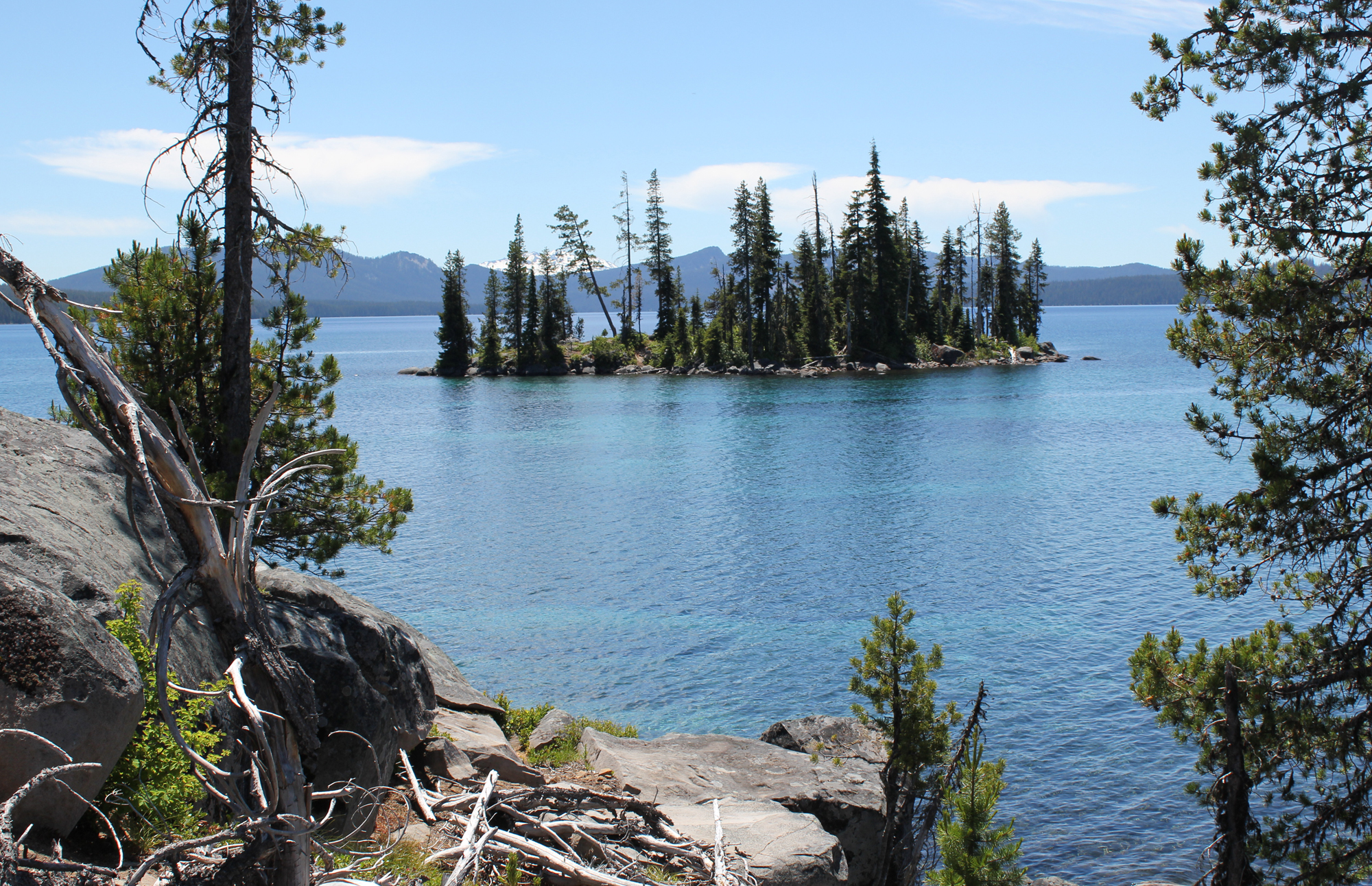Trip Report:
Volunteer Leader: Mark Hougardy | Organization: Eugene-based Hiking Club | Dates: September 10, 2017, | Participants: 7 | Type: Day hike and wayfinding
Along the forested backbone of Oregon’s Cascade Range is a large tranquil lake that invites “Where’s Waldo?” jokes. But, laughter aside, Waldo Lake is quiet. For those exploring the hushed shoreline, they might wander upon an old mountain hemlock blazed with the 130-year-old text, “Camp Edith, Waldo Lake.” At first, the blaze appears as an act of modern vandalism, but looking closer at the aged wood a modest story slowly reveals itself. The story is about a child who grew up to become the astute and reserved white-bearded grandfather of Oregon’s public lands. It was his passion that laid the groundwork for six national forests, over a dozen wilderness areas, and even support for Crater Lake National Park. Yet, most who visit these places today, don’t know this man’s name, Judge John Breckenridge Waldo. The few who know his name compare him to Emerson or Thoreau; some even call him “Oregon’s John Muir.”
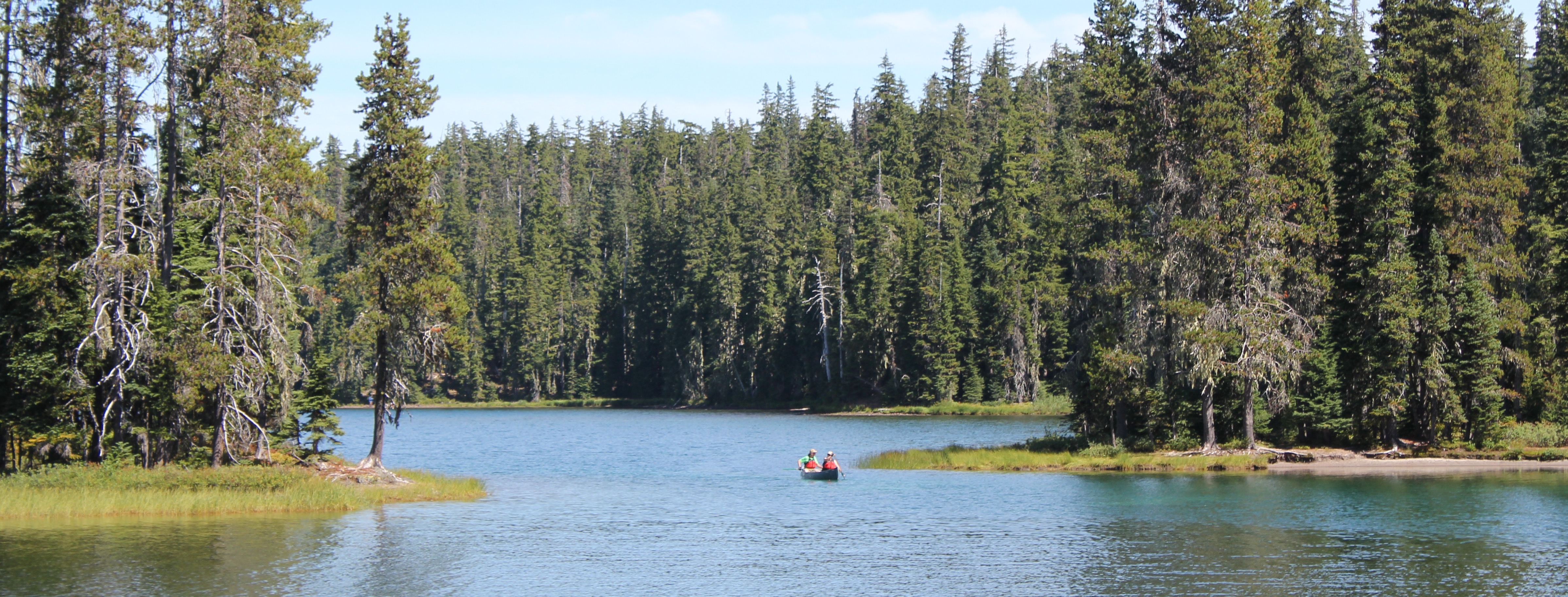
The lake is rare in that it is a gas-free zone, only wind and human-powered boats are allowed.
My curiosity about John B. Waldo was piqued when I learned that his documents could be found nearby at the University of Oregon Special Collections archive. A visit to the archives was arranged through a local hiking club and several others joined me. A library staff member delivered several old boxes to our table.
As we carefully reviewed this man’s life, a grainy black-and-white photograph caught my gaze. The photo was etched with the text, “Camp Edith, Waldo Lake.” The picture was dated 1890 and revealed a couple of trees and a canoe. At first, I was stunned by the fortitude and strength involved in hauling early camera equipment and a canoe more than 70 miles or so into the mountains.
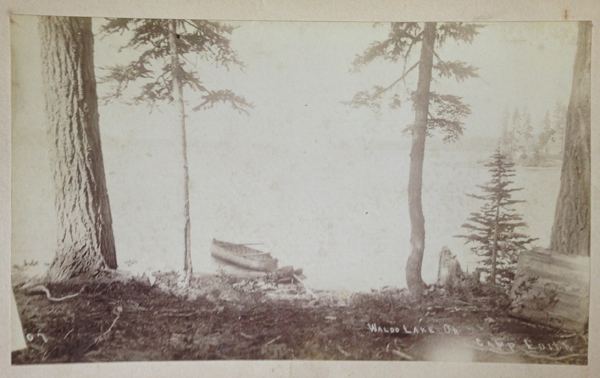
Then I was curious because none of my fellow hikers had ever heard of this place. I looked at modern maps, but there was no reference to Camp Edith. I looked at maps from the late 1800s and early 1900s, but still found nothing. The more I researched, the deeper the mystery became. This “lost” campsite of Waldo’s was a loose thread in a story, and I just had to pull at it.
John B. Waldo was born in 1844 to parents who had arrived just a year earlier on a wagon train and were new arrivals to the Willamette Valley. Waldo, as a child, had asthma which worsened in the summer as the valley filled with heat and smoke. Seeking refuge, Waldo and his brother made forays into the nearby Cascade Mountains for clean air. Waldo returned often.
As a young man, he studied law, became an attorney, and was eventually elected to the Oregon Supreme Court, even serving as a representative in the state legislature. He loved law and policy but always returned to the mountains, often for months at a time, to write about nature.
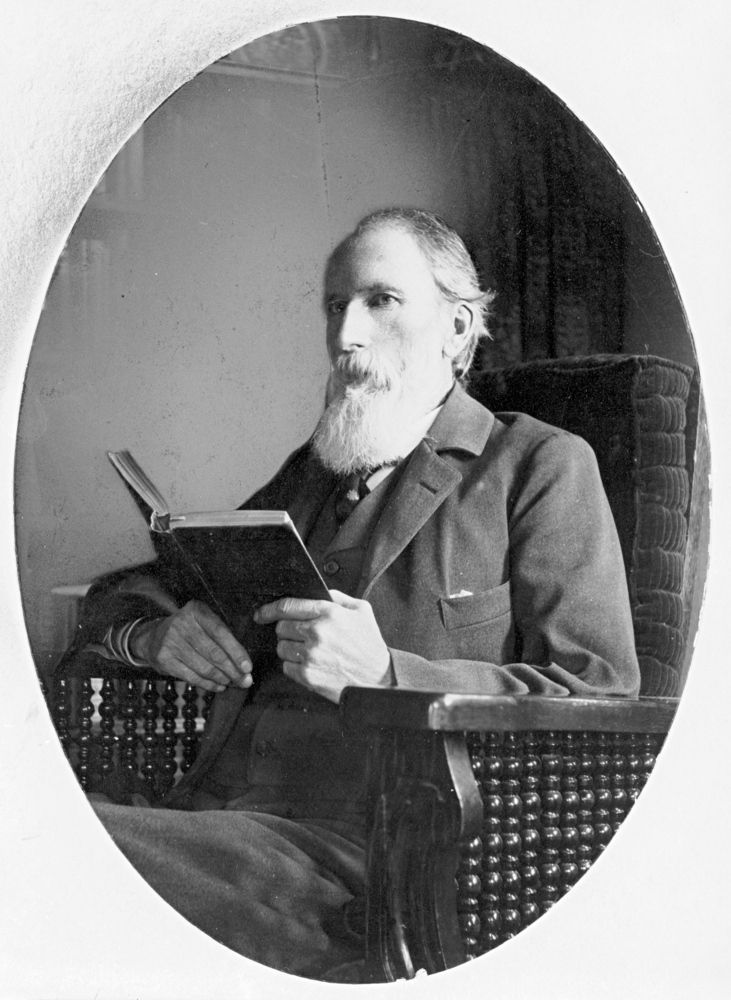
From 1877 to 1907, Waldo extensively explored and chronicled —in his words— the “untrammeled nature” of Oregon’s Cascades. He believed that modern life had “narrowing tendencies” on a person and that wilderness allowed difficulties to “be perceived and corrected, and the spirit enlarged and strengthened.”
He had seen the effects of over logging back east and overgrazing in the Cascades by sheep. Waldo imagined a protected place in the mountains where people could escape the toils of life. An individual’s trip would be assisted by an interconnected trail system dotted with lodges. These lodges would be roughly a day’s walk apart, where hikers and travelers could stay, enjoy a meal, and rest. Upon returning from his expeditions, he quietly and diligently advanced such a vision: a 40-mile-wide protected band along Oregon’s mountainous crest stretching 300 miles from the Columbia Gorge to the California border. Waldo spent decades and countless hours increasing public awareness through letter writing, newspaper posts, and using his professional resources to advocate for this vision.
Waldo died in 1907 at the age of 63; he had become ill while attempting to summit Mount Jefferson. His colleagues returned Waldo to his family farm outside of Salem, where he passed. After his death, his writings became missing, but Waldo had started something in the minds of others. In the following years, national forests and wilderness areas began to form a patchwork along Oregon’s crest. Outdoor enthusiasts created clubs like the Mazamas, the Chemeketans, and the Obsidians, all dedicated to experiencing the outdoors. Three of the west’s greatest national park lodges were constructed in Oregon: the Chateau at the Oregon Caves, Crater Lake Lodge, and the crowning gem Timberline Lodge on Mount Hood. Rangers opened campgrounds, trail maintenance volunteers began creating and maintaining hundreds of recreation trails, skiing enthusiasts opened ski resorts, and rafters opened rafting companies. Friends of the Pacific Crest Trail (PCT) worked to span Oregon with this narrow ribbon of trail that crosses the U.S. from Mexico to Canada. In the past few years, via a citizens’ initiative, Oregon voters secured funding so all fifth or sixth-grade students can move from their school classrooms into the outdoors to learn and be immersed in nature.
For almost 80 years, the location of Waldo’s writings and photos was unknown and thought to be lost. In the 1980s, these items were located in an attic and delivered to a conservation organization in Eugene. Eventually, his papers made their way to the University of Oregon archives and can be viewed today by appointment. It was here where I first saw the old grainy photo inscribed, “Camp Edith, Waldo Lake.” Supposedly this was one of his favorite locations. Yet, where was this place?
During the past year, I have been reading, researching, and trying to figure out where Camp Edith might be. I poured over maps, performed internet searches, and reviewed old hiking books but found nothing. I checked with living knowledge keepers: the seasoned hikers, campers, and old-timers in central Oregon. Most only knew about Waldo because of the lake that shares his name. Of the few who knew about Waldo as a preservationist, only a handful had heard about Camp Edith.
A man said he knew of the camp. He suggested that I look at Waldo’s obituary for guidance. One portion stood out. It read, “To him, the mountains with their purpling canyons and glittering snow peaks were a book to which there was no end. The beauty of the hills was a sermon.” Inspiring words, but was I any closer to finding Camp Edith?
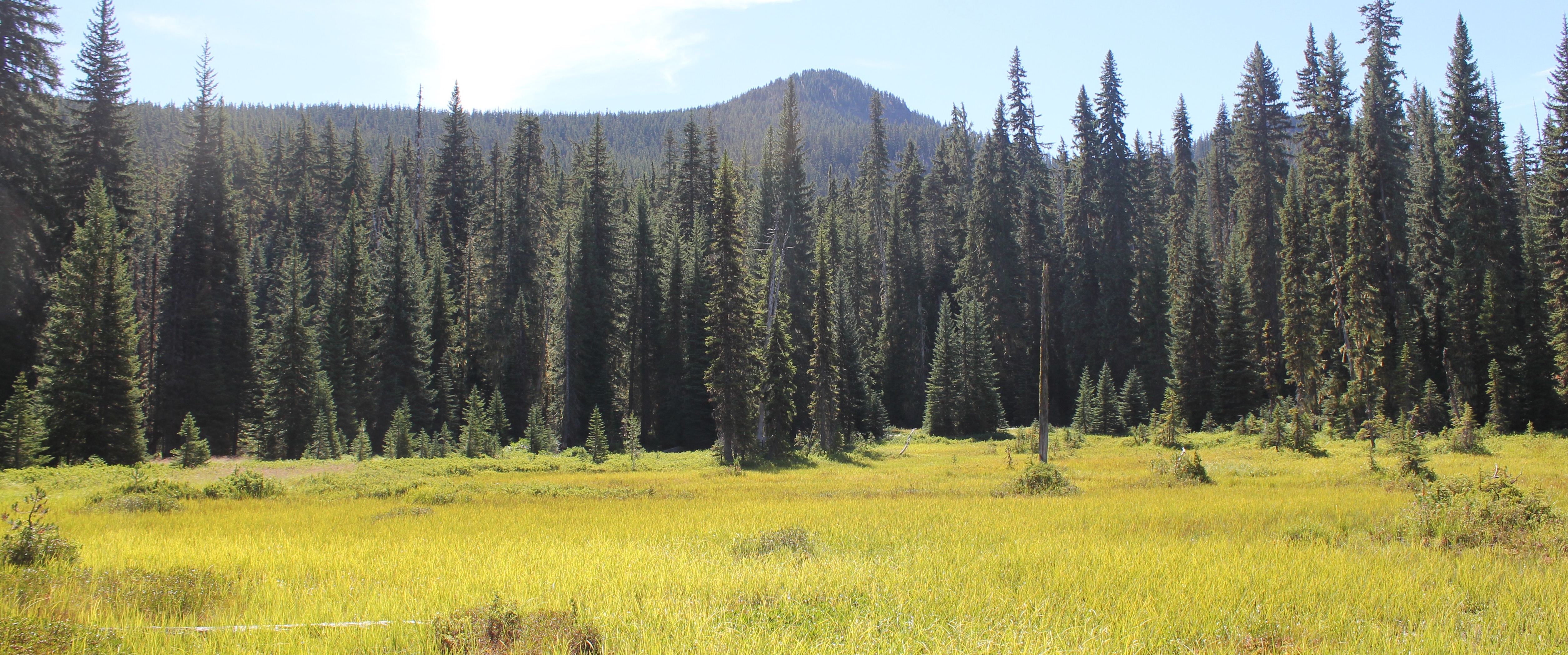
Another person, a retired employee of the Forest Service, revealed she knew of the camp’s location. She added, “It’s easy to forget where a single tree is in the forest, but [she] could point me in the right direction if I wished.” Several weeks later, a PDF copy of Waldo’s transcribed 500-page diary arrived in my inbox from someone I never met along with the text, “A former colleague thought you might appreciate this.”
One individual, with ties to the Waldo documents, said he knew where the campsite was located, but, “It’s yours to find.”
Finally, I met an aged man who loved long-distance hiking and somehow knew that I had been looking for Camp Edith. He claimed to have walked across the U.S. a total of four times in his life and was eagerly looking forward to at least another two trips. He wore a Grateful Dead t-shirt and on his pack a bright yellow button of the Gadsden flag with a rattlesnake and the words, “Don’t Tread On Me.” The man said he had “hiked all over Oregon including Waldo Lake” and had seen the Camp Edith tree and knew the location. He had enjoyed eating a sandwich there. I leaned in, hoping for a quick answer to the location, but he uttered these enigmatic words, “When you find the tree, man, you’ll be there.” I left feeling none the wiser, or did I?
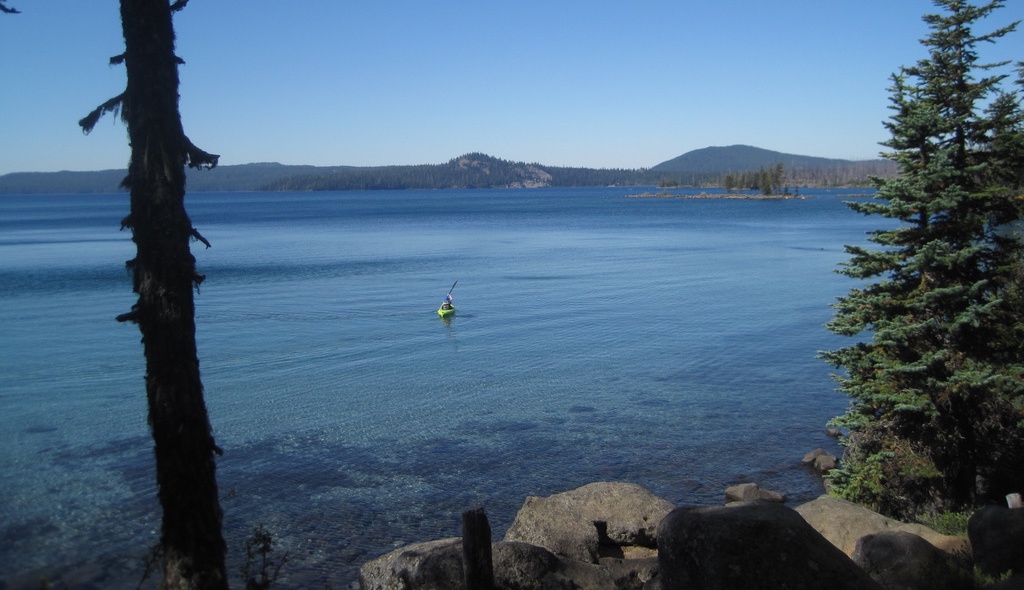
That winter, when skies in the Pacific Northwest are overcast and darkness comes quickly in the afternoon hours, I wrapped myself in a warm quilt. I jumped into reading Waldo’s 500-page diary. It was here that I learned that during Waldo’s treks, he traveled for months to nourish his insatiable wanderlust and love of the mountains. This included trekking as far south as California’s Mount Shasta.
But like many of us who desire to travel, when we do so, we become homesick for loved ones, and Waldo was no exception. In 1889, or thereabouts, to lessen his loneliness he christened a favorite camping site in honor of his daughter, Edith. Shortly after, a colleague blazed a heart-shape and Edith’s name into a tree trunk.

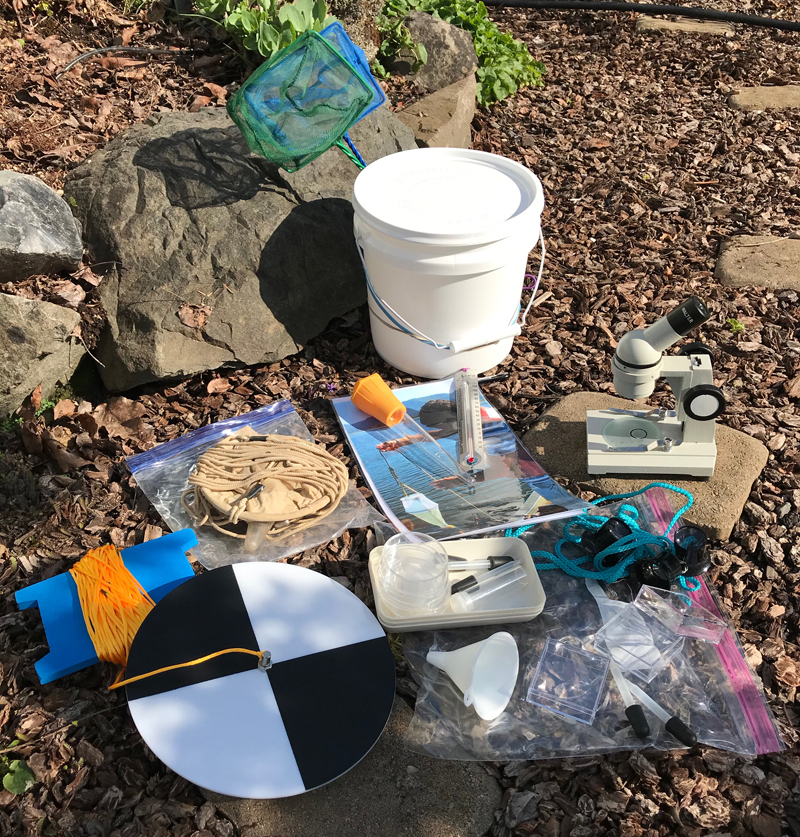
As I waited for the snow in the mountains to melt and for the highway to Waldo Lake to reopen, I casually picked up the old photo of Camp Edith that I had looked at a hundred times before and saw something small. I grabbed a magnifying glass. At that moment, I knew the basic location of the camp. I had enjoyed my journey up to this point, but now, others needed to share in the experience. Therefore, I enlisted members of the same hiking group I had met at the archives the year before.
Several months later, we arrived at the lake. I provisioned them with three items: a copy of the Camp Edith photo from 1890, a few telling diary entries from Waldo’s writings, and pointed them in a direction. Everyone was eager, if a bit perplexed, as we walked into the vast forest to find a single tree.
Waldo Lake is always an inspiring place to visit. It is one of the largest natural lakes in Oregon, roughly 5 miles in length and 2 miles in width. The waters are clear and turquoise and the deeper areas are bespeckled with shades of rich blue. Light can easily penetrate 60 feet deep and possibly further.
Progress was slow as we carefully crossed marshy fields, scrambled over downed logs, and occasionally got our feet muddy as they identified clues in the photo. The day was getting late and several questioned if the tree even existed. I was also beginning to wonder, as this was taking longer than expected, but then a joyous shout.
Arriving at the tree, we saw thirteen decades of bark growth had covered the blaze, but the inscription was still legible: “Camp Edith, Waldo Lake.”
After a year of reading Waldo’s papers, speaking with others, and carefully studying an old photo from 1890, my fellow explorers and I stood at Waldo’s lost campsite. Well, “lost” is a relative term. While we celebrated our discovery, we were not the first to locate the tree. People had likely visited here many centuries before Waldo’s time, and in more recent years pitched tents, or stopped for lunch along a lake’s edge, or even tried to solve the mystery of Camp Edith’s location for themselves.
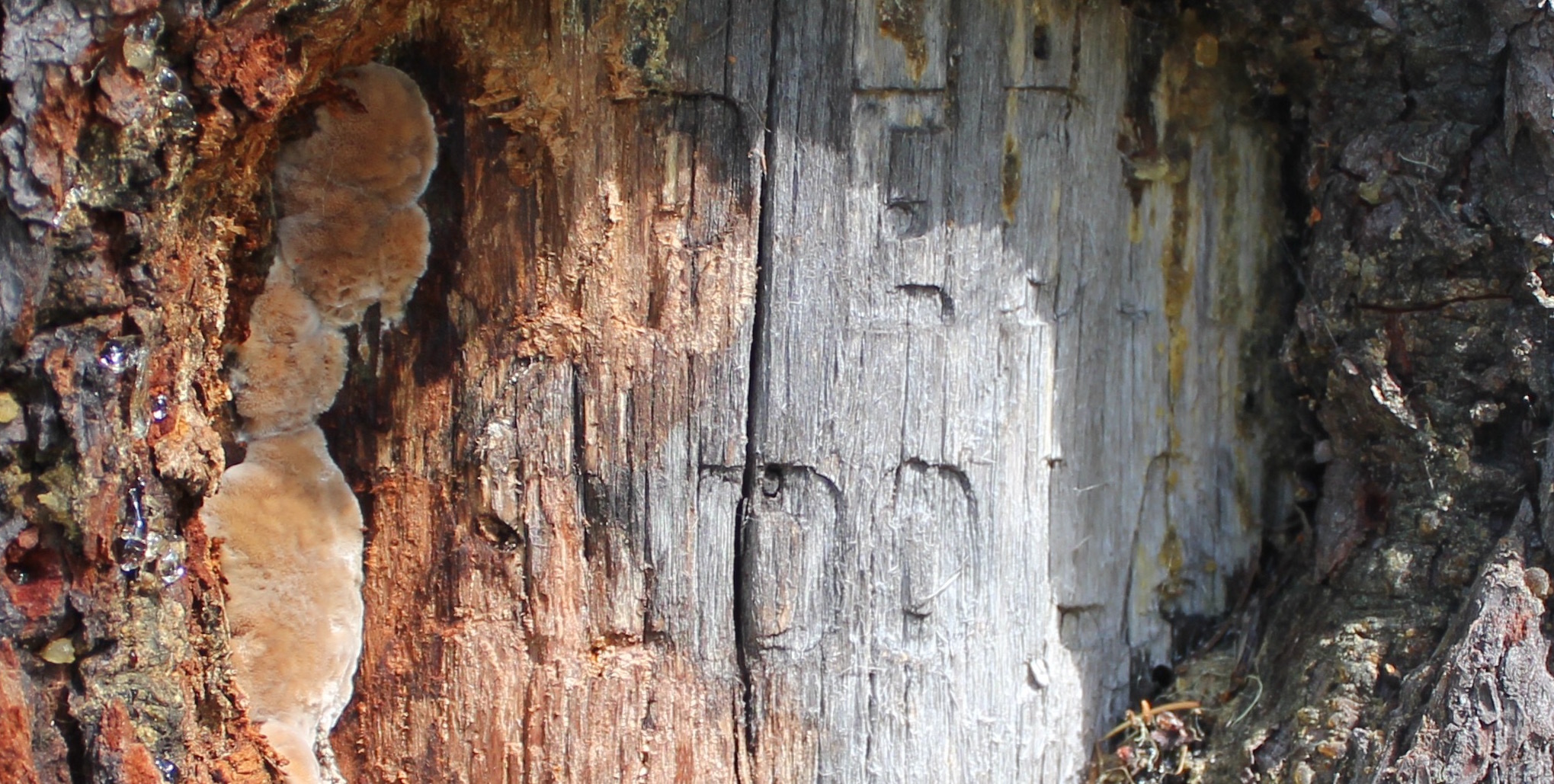
Standing there, I remembered blissfully walking past this location several years earlier during a day hike, yet never turning to see the blaze on the tree. I shook my head at the wondrous absurdity of my journey, a year of research only to discover a place in the outdoors where I had walked before.
Sharing that moment with others, standing on the shore of a picturesque lake in the middle of the woods, was a sense of nourishment, renewal, and connection. The tree’s inscription shares a nearly forgotten story, but to me, this is not a monument. Waldo’s monument isn’t this inscription, or a lake with his name, or even dusty photos in an archive. Waldo’s monument —his legacy— is about generations of people being outside, connecting with nature, and enjoying Oregon’s beautiful mountains.
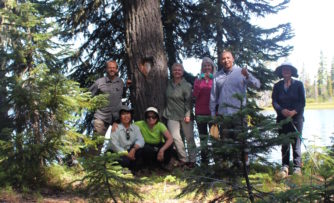
“The lake stretches away up to the North; crags and peaks tower above us. It is a splendid scene – this source of rivers and cities, hid away, like pure trains of thought from vulgar observation – in the deep bosom of the wilderness buried. Camp Edith sends you greeting, “greeting to Edith from ‘Papa’s Lake.’”
-An excerpt from one of Waldo’s 1890 letters
“Children born and reared here might be expected to have something of the wild flavor of nature in their composition.”
-Some of the last known words recorded in Waldo’s wilderness diary (between Aug 14- 17, 1907 just before his death)


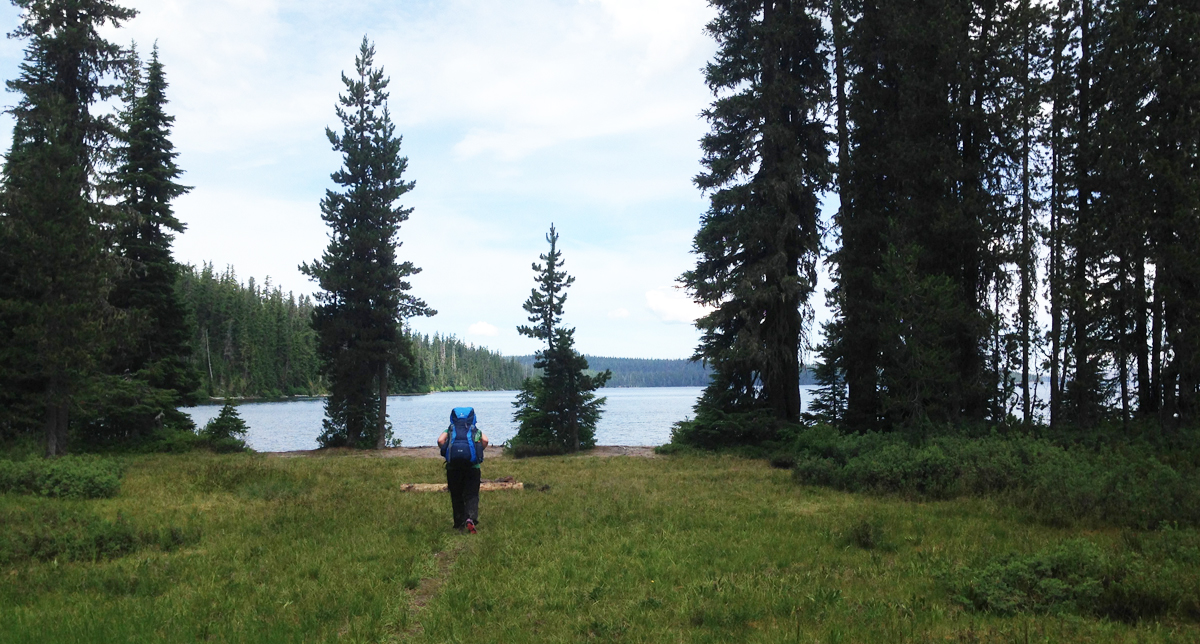 Waldo Lake is one of Oregon’s largest bodies of water, though its lack of amenities such as convenience stores, resorts, and ban of motorized motors upon the water makes this destination easily overlooked. If you’re interested in a great overnight backpacking trip to try the Jim Weaver Loop, a 20.2-mile trail around Waldo lake, here are some photos taken in early July.
Waldo Lake is one of Oregon’s largest bodies of water, though its lack of amenities such as convenience stores, resorts, and ban of motorized motors upon the water makes this destination easily overlooked. If you’re interested in a great overnight backpacking trip to try the Jim Weaver Loop, a 20.2-mile trail around Waldo lake, here are some photos taken in early July.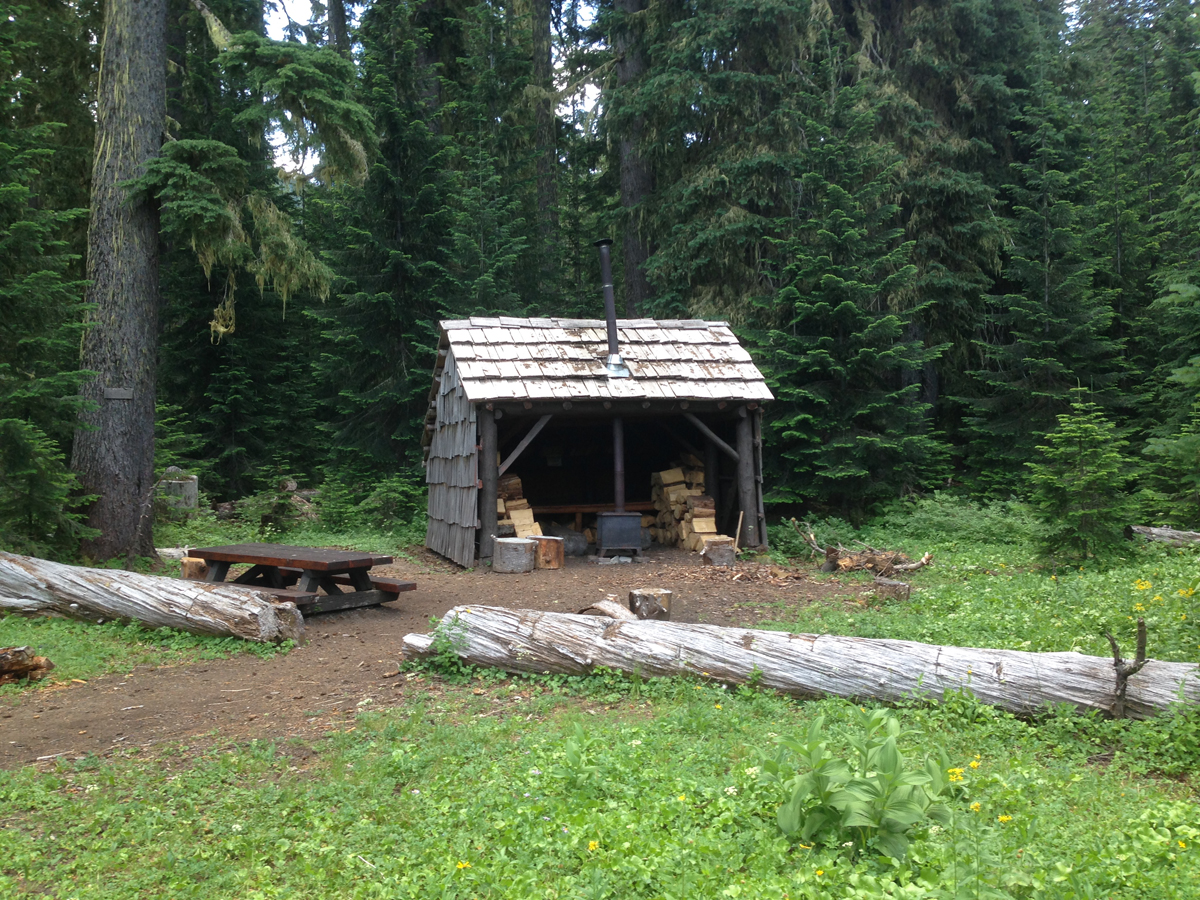 Near Mile 2. Our first stop was at the South Waldo shelter, it was fully equipped with wood and a stove; this is a popular destination in the winter. We continued on.
Near Mile 2. Our first stop was at the South Waldo shelter, it was fully equipped with wood and a stove; this is a popular destination in the winter. We continued on.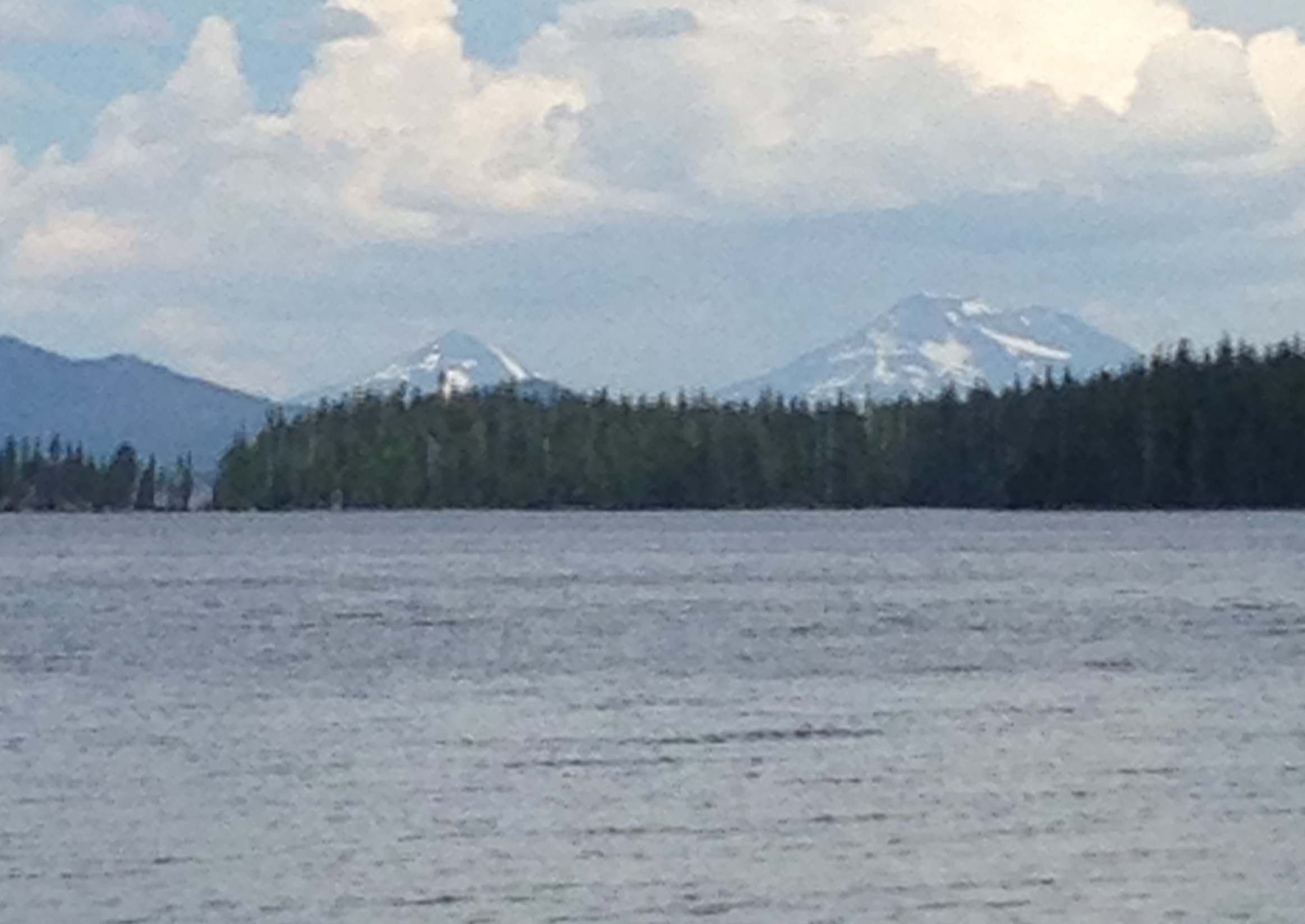 The south shore had some great views of the South and Middle Sisters. The trail now meandered up the western side of the lake.
The south shore had some great views of the South and Middle Sisters. The trail now meandered up the western side of the lake.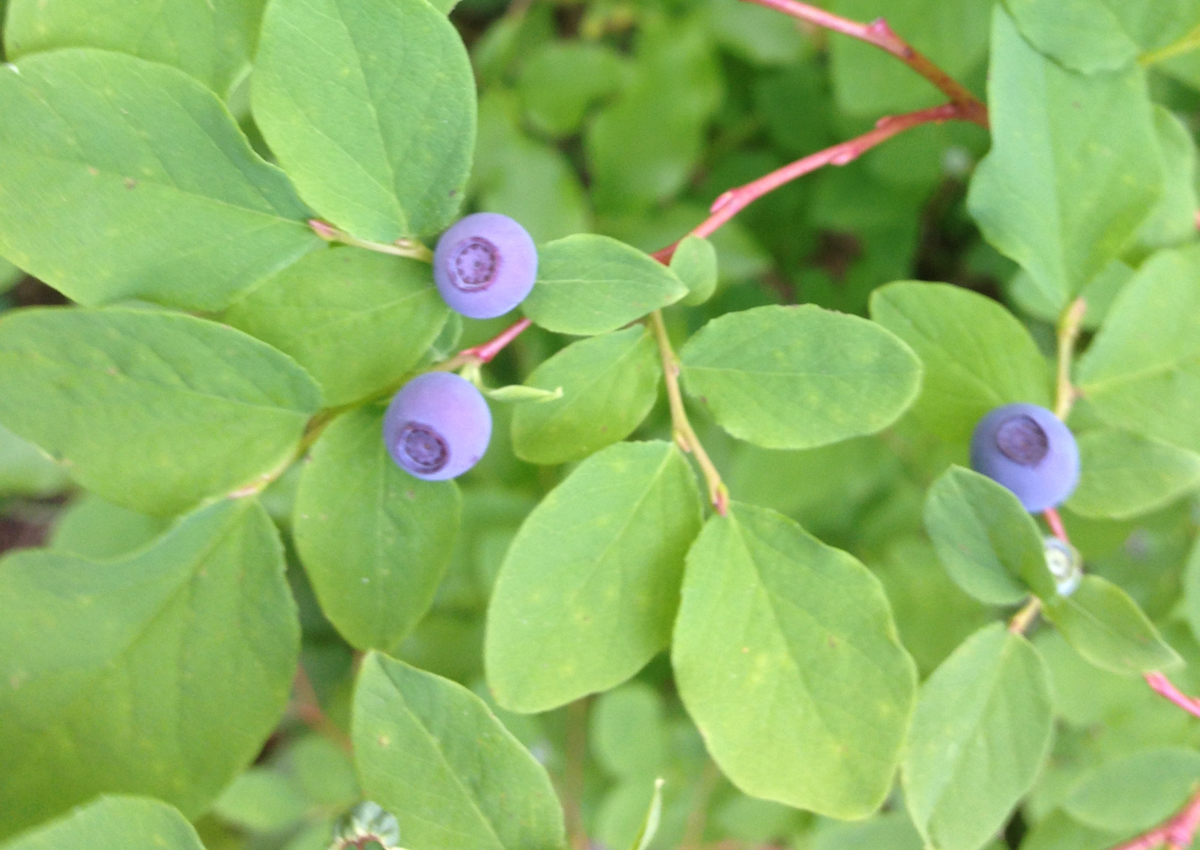 Cascade Blueberry
Cascade Blueberry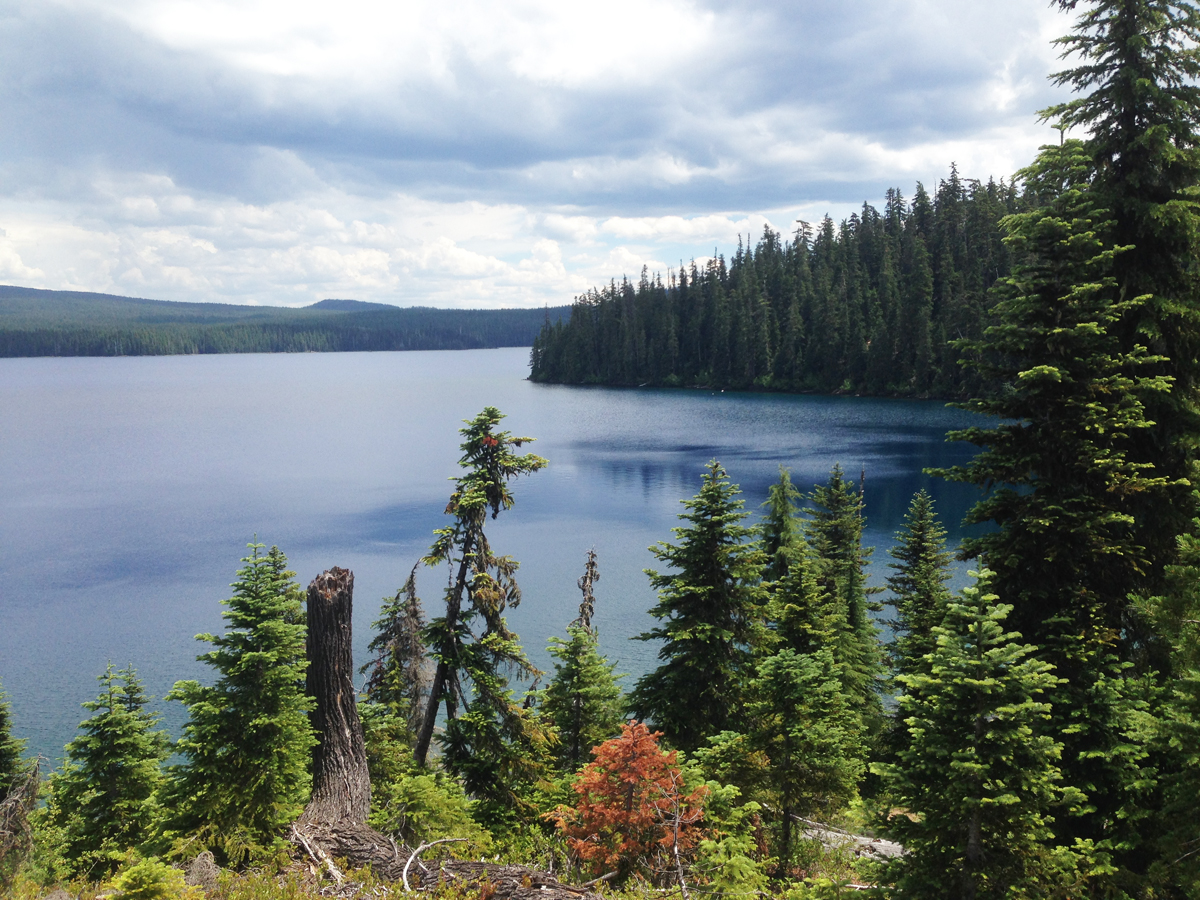 Close to Mile 5. Overlooking the picturesque Klovdahl Bay. Overhead, the clouds began building into thunderheads; in the distance, we could hear the rumbling crescendo of thunder as though gigantic timpani drums were being struck.
Close to Mile 5. Overlooking the picturesque Klovdahl Bay. Overhead, the clouds began building into thunderheads; in the distance, we could hear the rumbling crescendo of thunder as though gigantic timpani drums were being struck.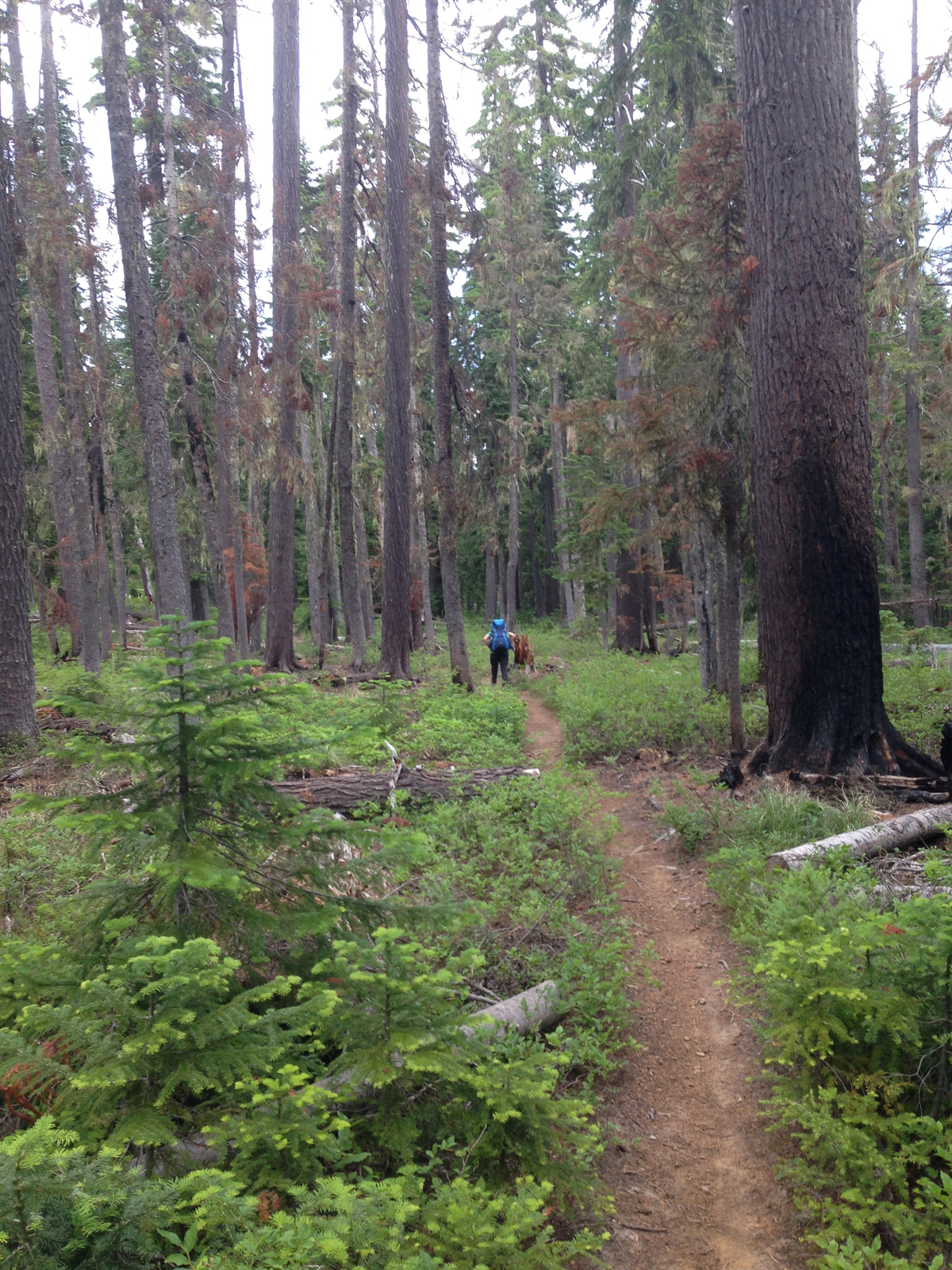 The western trail has a number of places where the forest looks like it had a close encounter with a forest fire; note the scoring on the tree at the right.
The western trail has a number of places where the forest looks like it had a close encounter with a forest fire; note the scoring on the tree at the right.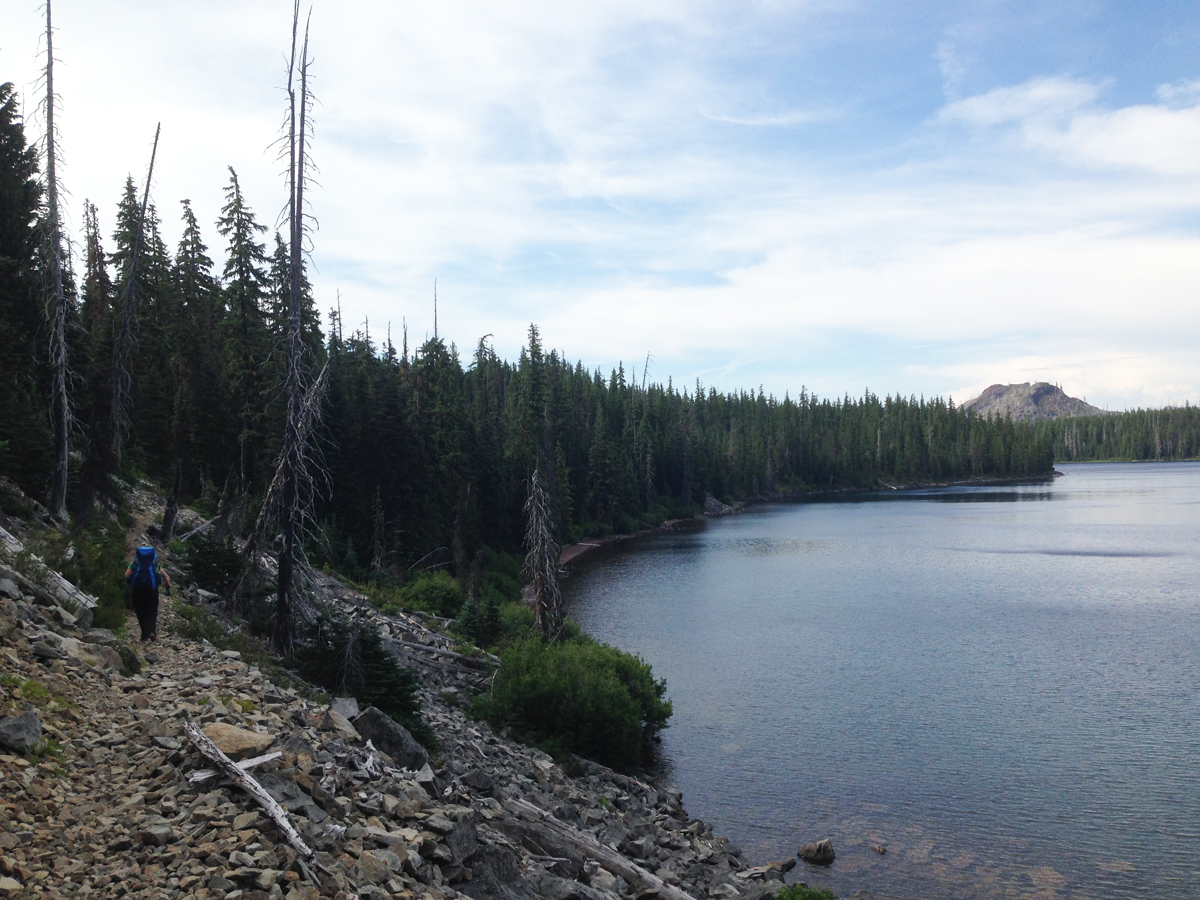 Mile 10. Continuing north. Seen in the right on the image, about 2-miles away is a scarred hilltop within the burn zone.
Mile 10. Continuing north. Seen in the right on the image, about 2-miles away is a scarred hilltop within the burn zone.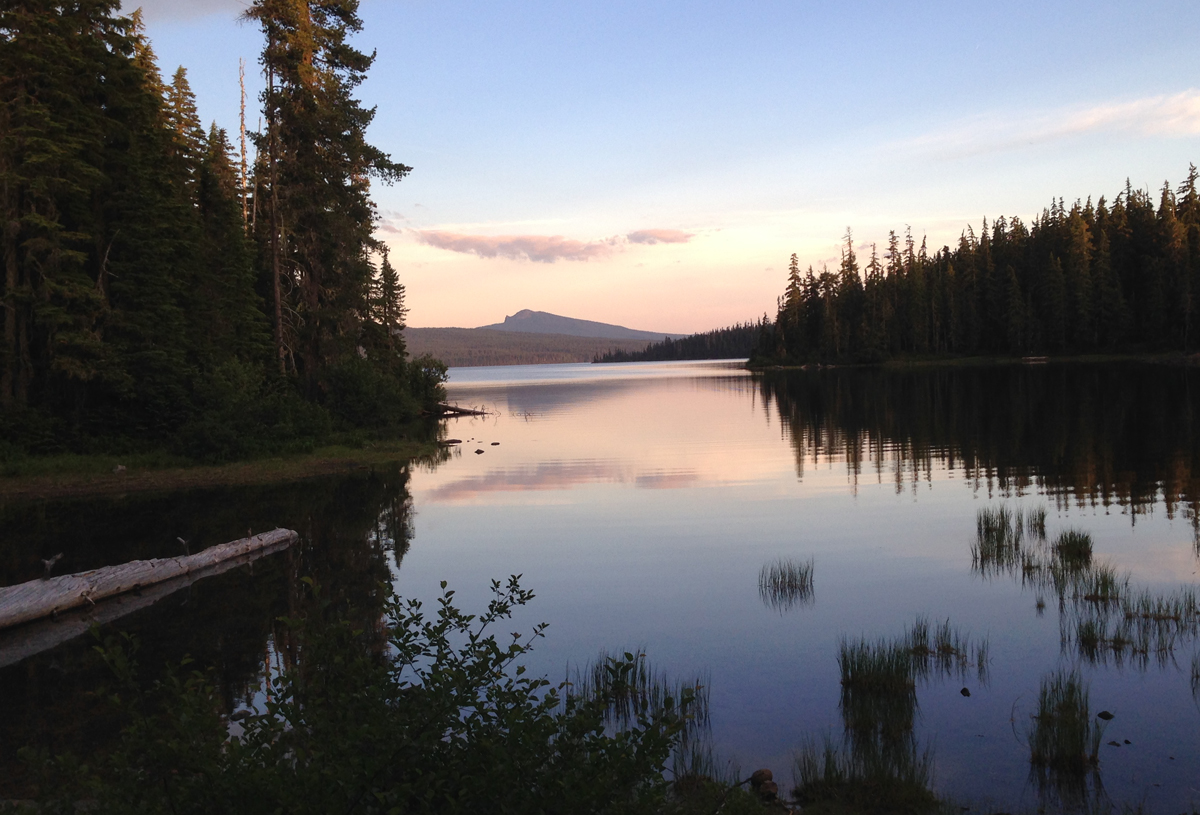 We spied several campsites peppered along the western shore of the lake, but as we reached the northern shore we discovered a favorite spot was vacant. As evening approached we appreciated a gentle breeze that chased most of the mosquitoes away.
We spied several campsites peppered along the western shore of the lake, but as we reached the northern shore we discovered a favorite spot was vacant. As evening approached we appreciated a gentle breeze that chased most of the mosquitoes away.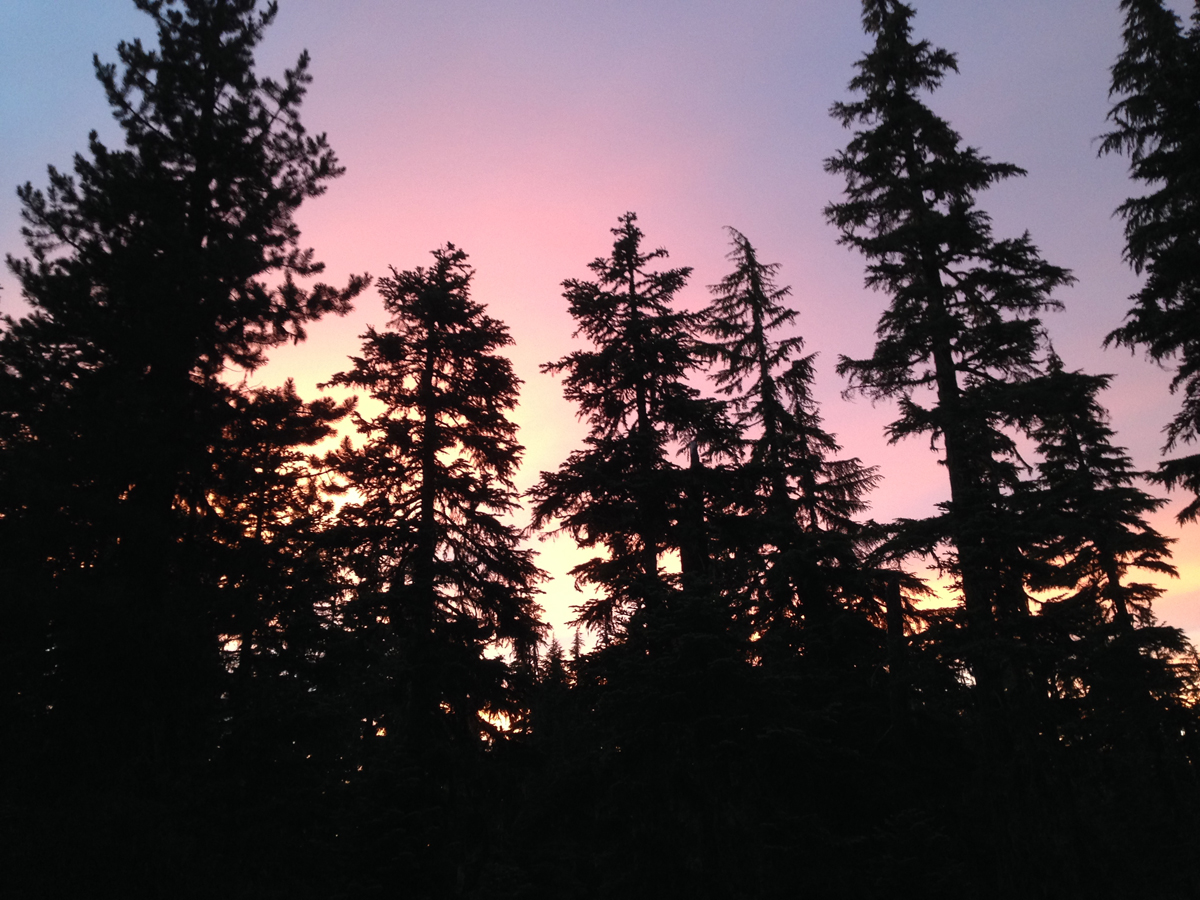 Enjoying a gorgeous sunset. The sky was clear that night when the stars came out they were so bright you could almost touch them.
Enjoying a gorgeous sunset. The sky was clear that night when the stars came out they were so bright you could almost touch them.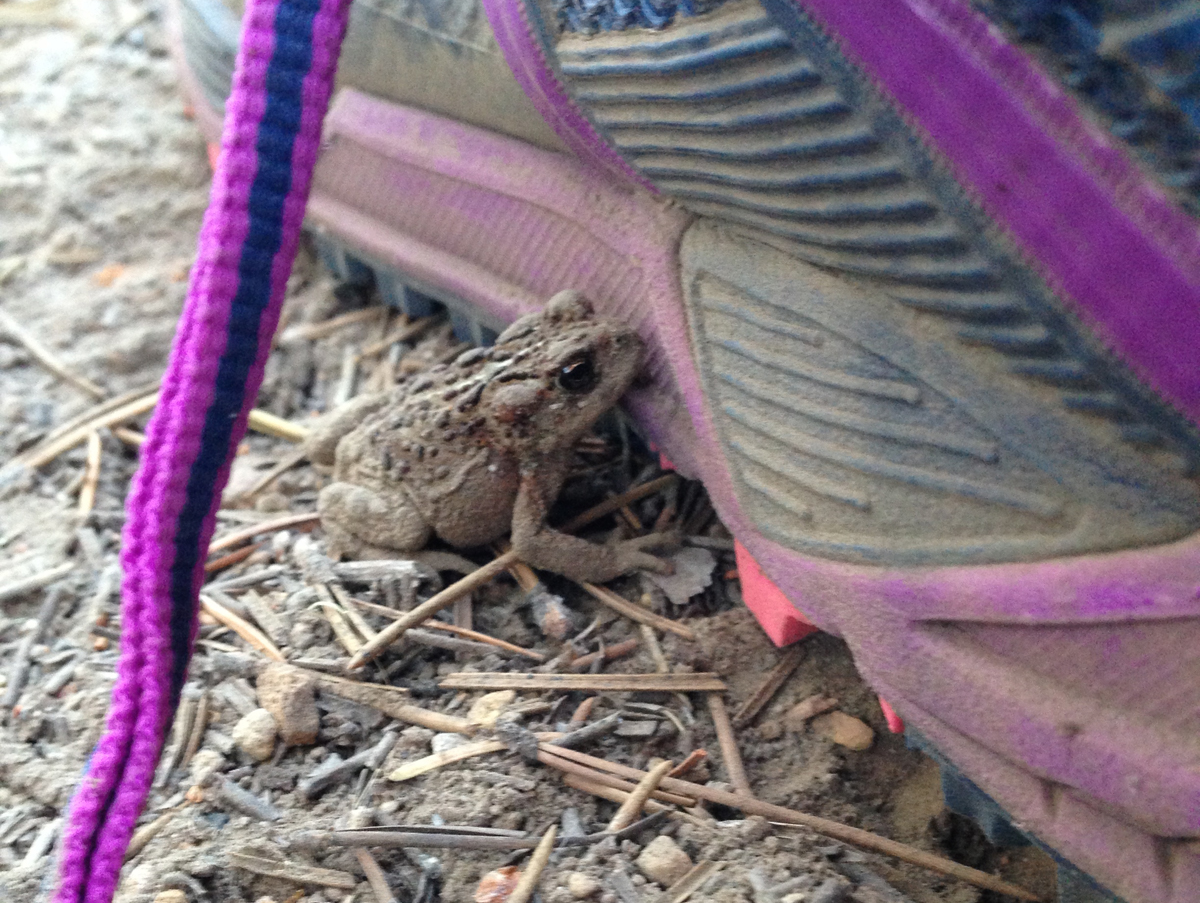 A very small toad had made its home just outside our tent during the night. It was discovered in the morning hiding next to one of our shoes.
A very small toad had made its home just outside our tent during the night. It was discovered in the morning hiding next to one of our shoes.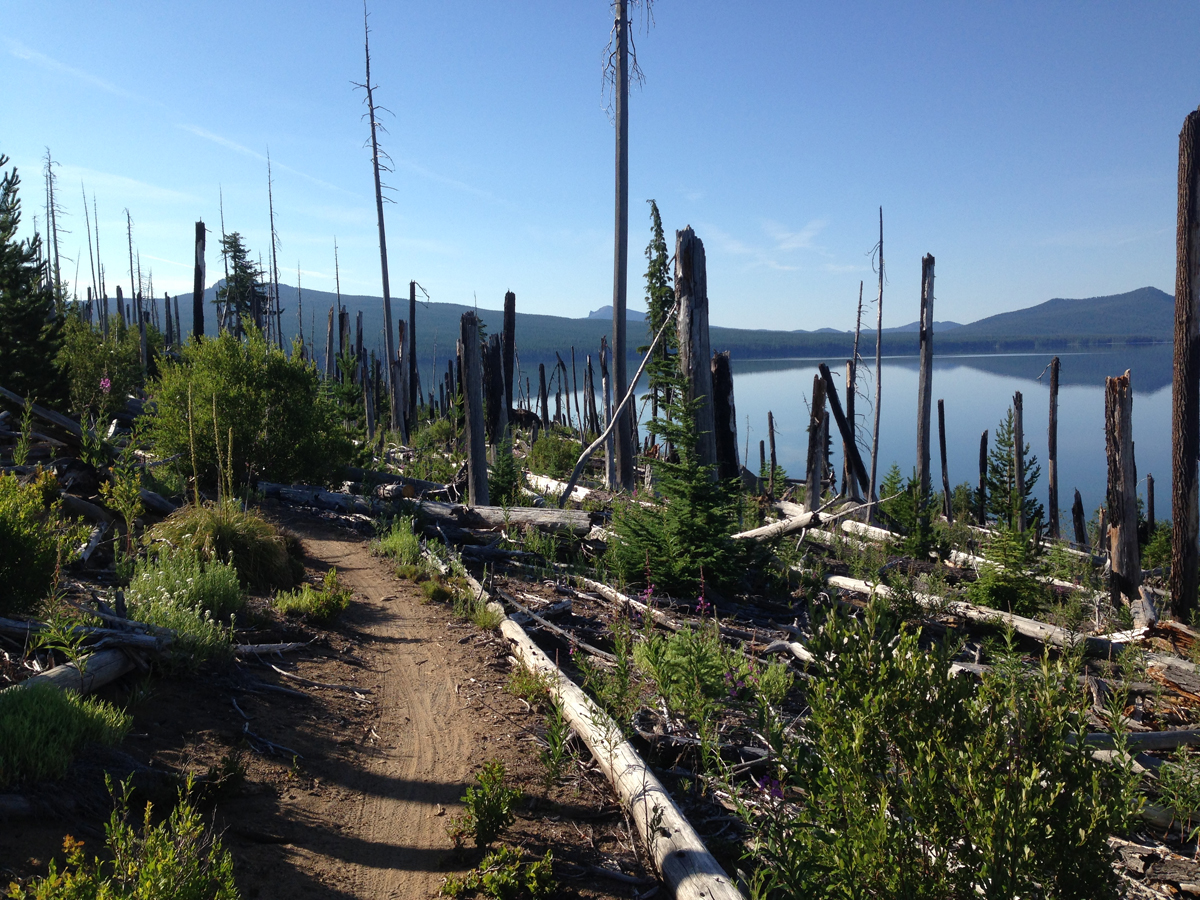 Roughly Mile 12. Heading east, the trail meanders through the burn zone along the north shore. This day was going to be hot so we tried to cross before the sun rose too high in the sky. Several weeks earlier, during
Roughly Mile 12. Heading east, the trail meanders through the burn zone along the north shore. This day was going to be hot so we tried to cross before the sun rose too high in the sky. Several weeks earlier, during 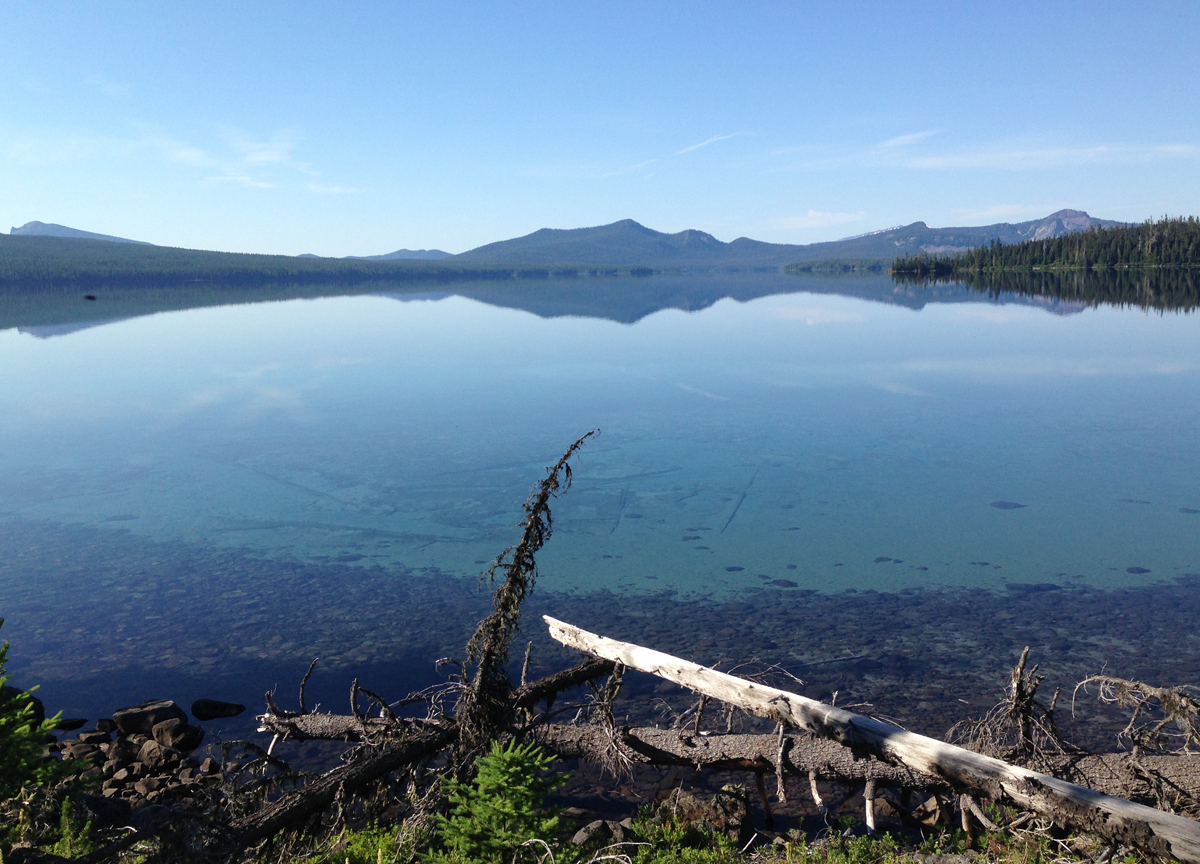 Mile 13-ish. Standing on the north shore looking across to the southern shore. The morning was calm, it was difficult to tell where the sky ended and the lake began. Determining the depth of the logs seen the water was difficult, but if the terrain continued its steep angle into the water, these logs were at least 40 feet deep in the foreground and 60+ feet deep further out.
Mile 13-ish. Standing on the north shore looking across to the southern shore. The morning was calm, it was difficult to tell where the sky ended and the lake began. Determining the depth of the logs seen the water was difficult, but if the terrain continued its steep angle into the water, these logs were at least 40 feet deep in the foreground and 60+ feet deep further out.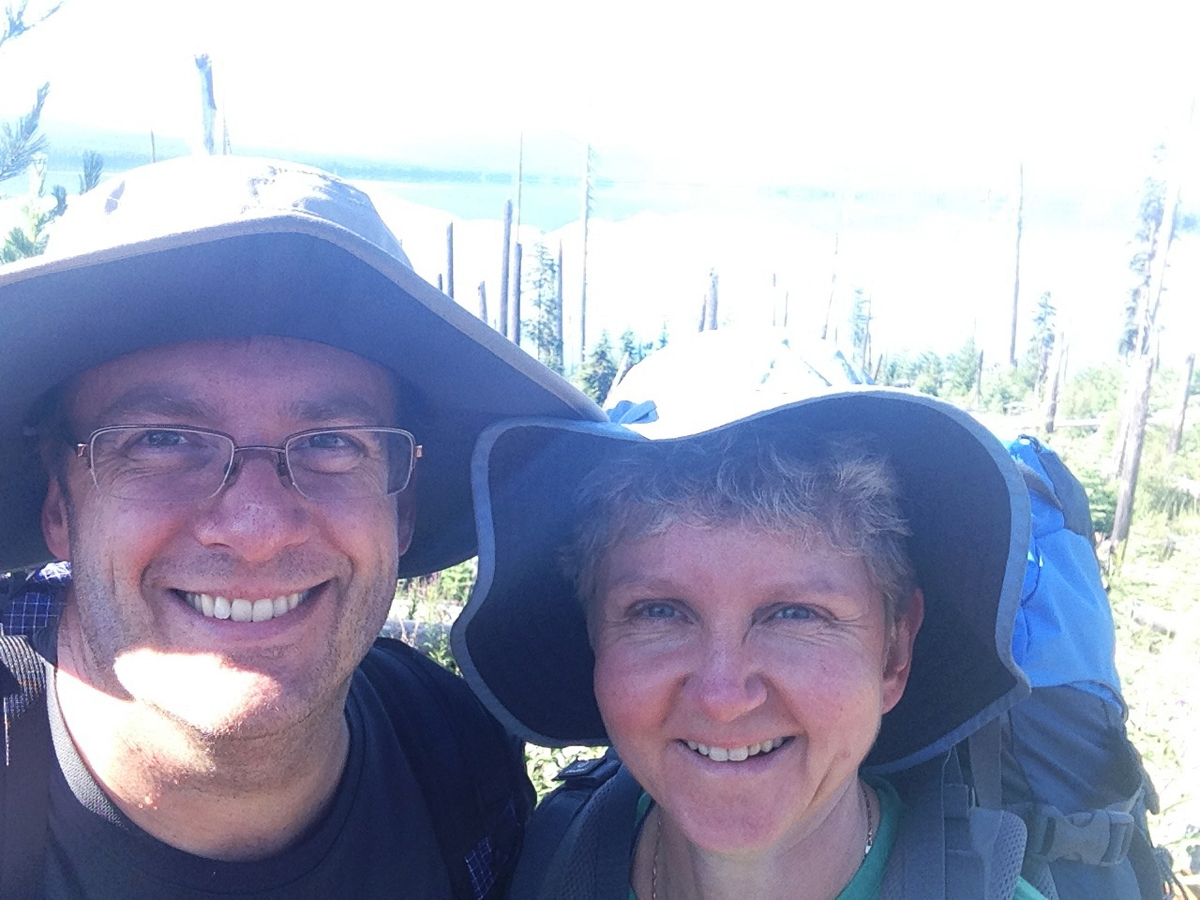 A Couple Selfie taken on the trail within the burn zone.
A Couple Selfie taken on the trail within the burn zone.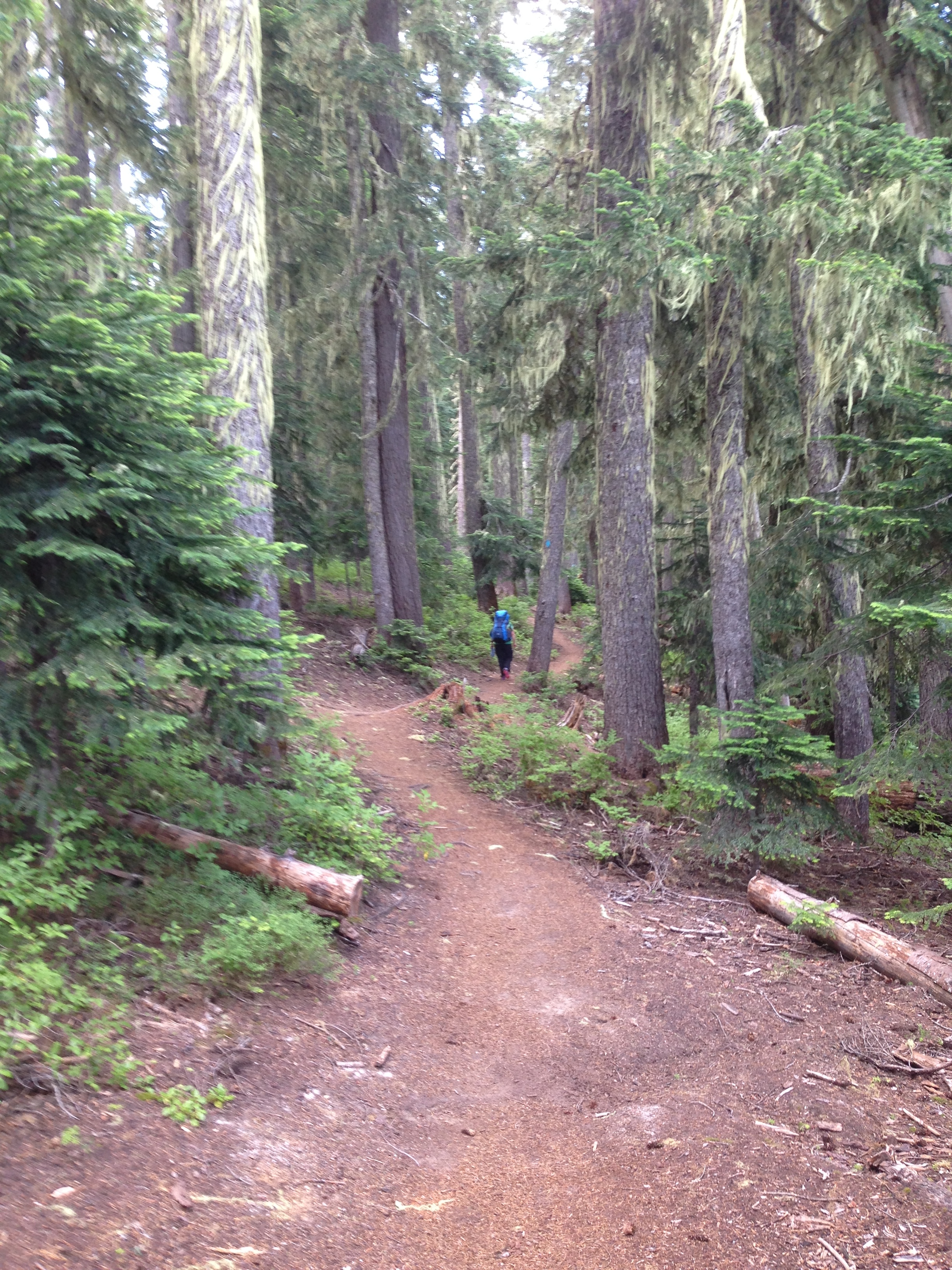 We’re out of the burn zone and heading south along the eastern edge of the lake. Half of the trail around Waldo Lake is in the woods, with only brief glimpses of the water. Be prepared to see lots of trees.
We’re out of the burn zone and heading south along the eastern edge of the lake. Half of the trail around Waldo Lake is in the woods, with only brief glimpses of the water. Be prepared to see lots of trees.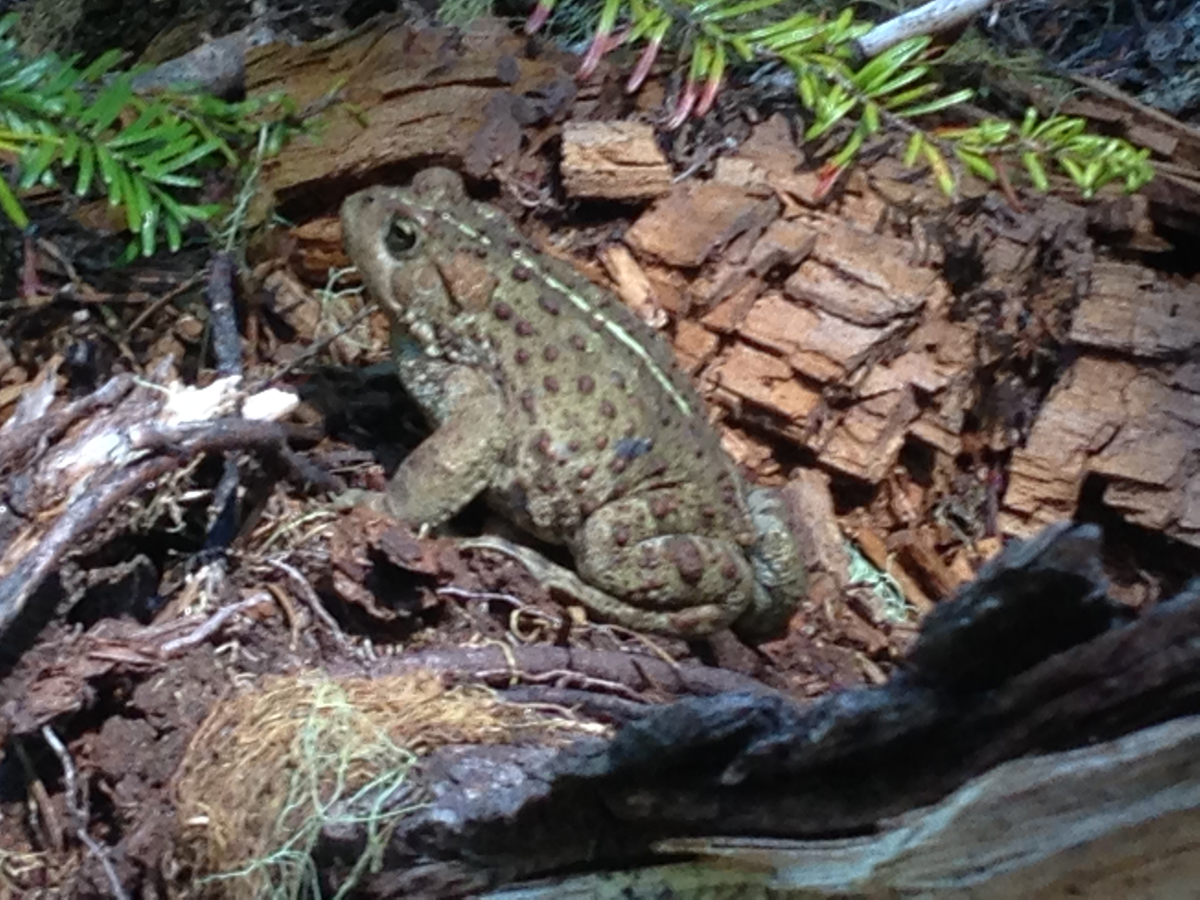 Just as we neared the south shore a massive toad was seen at the edge of the trail eating mosquitoes. During the entire trip, mosquitoes were not a big issue, though the last several miles of the trail we were devoured by these little flying beasts! I was glad to see this toad!
Just as we neared the south shore a massive toad was seen at the edge of the trail eating mosquitoes. During the entire trip, mosquitoes were not a big issue, though the last several miles of the trail we were devoured by these little flying beasts! I was glad to see this toad!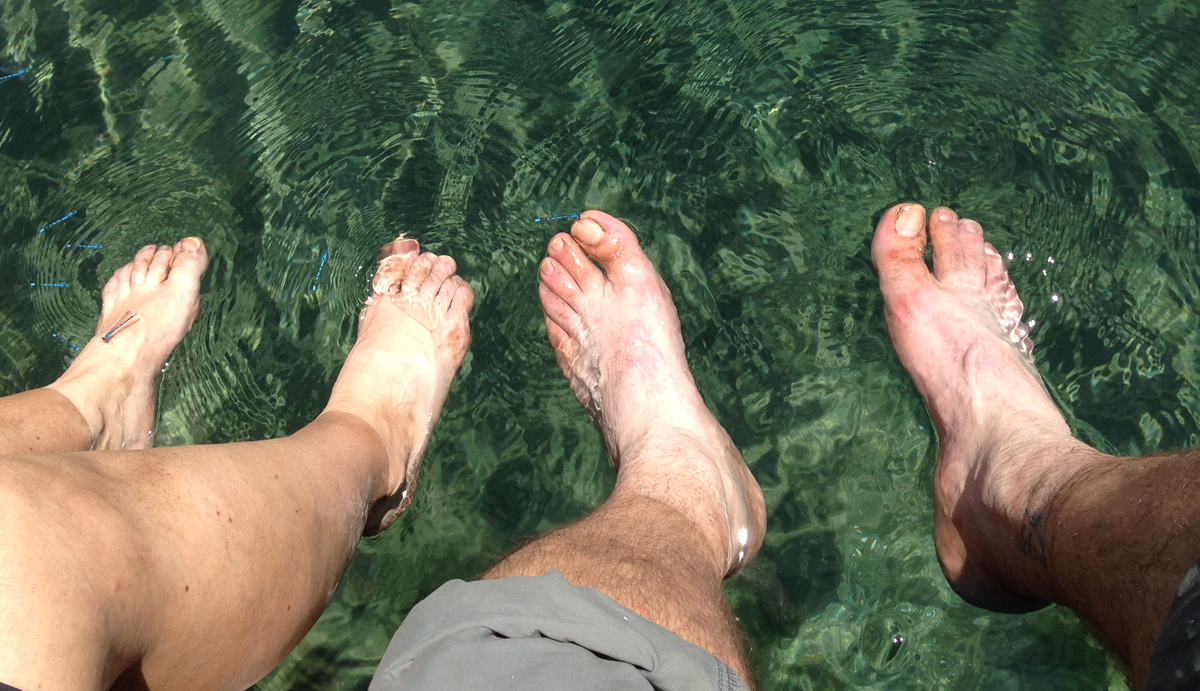 Mile 20.2. The best part of finishing the loop trail around Waldo Lake is that you can dip your feet into the lake’s cold and clean water.
Mile 20.2. The best part of finishing the loop trail around Waldo Lake is that you can dip your feet into the lake’s cold and clean water.